#its good. it builds character. and allows for artistic growth
Text
Every so often u just gotta have an agonizing crisis of art style ✌️
#its good. it builds character. and allows for artistic growth#but also it sucks haha. its just art block#which for me is more being paralyzed by all the things i wanna draw right this very second#all of which will take a very long time sigh...#i have finally stuck to something but the past few days have been bleh#also i have the overwhelming desire to take a more childrens book illustration style#like the super detailed old timey style#like those peter cotton tail books or like l4rry MacDougall vibes or the illustrations in young adult novels i read in hs#like hyper detailed madness. sigh... we'll see#i wish i could just focus on one thing at a time. i have so many ideas and half finished things#unrelated
14 notes
·
View notes
Text
Have You Seen Paradise?
My piece for the Fantaisie Zine, which was a collective fashion zine filled with articles and dynamic aesthetic choices for our favorite characters from Mystic Messenger! If you're interested in seeing the artwork depicted for this piece, be sure to check out my collab artist, @itscatbell on Instagram. It was a real pleasure to work on this Zine!
[Read on AO3]
FANTAISIE ZINE.
A daffodil blooming in shadows is a sight to behold. It may surprise you to hear that a flower can come to life without the light of the sun to spur its growth, but perhaps you haven’t thought to see beyond the reality handed to you by society. Flowers can be found even in the darkest places, surviving against the elements to prove their worth despite the expectation that they’ll wither and die within weeks of coming to life.
Have you felt it? Have you felt the judging eyes of people on your back whenever you decide to wear the clothes that make you feel like yourself? As if people have preconceived notions about you before they know the person underneath the surface? Are you tired of that feeling of eyes watching you as if they know who you are when they could never know the real you?
For the misunderstood members of society who feel shunned for surviving against all odds, don’t you wish there was a place in this world where you could be yourself without being removed from the darkness you’ve cultivated your identity? Wouldn't it be lovely to be yourself instead of erasing your personality and style to fit in with what they want?
It may sound too good to be true for such a place to exist, but Mint Eye is more than meets the eye. It's a space where all your dreams can come true if you're willing to take a chance on being yourself; For someone to be able to live a life where they are allowed to show every aspect of themselves without being afraid means that they have to be willing to open the door.
What better place to open that door than inside Magenta, the heart of Mint Eye?
It is a place where you are allowed to be yourself through and through. You can show who you are on the inside and find people who understand what it feels like to be shunned by society for being who they’re meant to be. Everyone in Magenta knows what it feels like to be scoffed at and driven away. You never have to be afraid of the wandering eye judging your appearance inside or out.
That’s because Magenta is where you belong.
Have you ever imagined what it’s like to step foot inside a castle? That’s what it feels like to walk inside Magenta. You’re transported to a place beyond space and time where fantasy and magic seemingly come alive. Some say if you dive deeper into the building, you may just find an eternal party where the masquerade beckons you to don a mask and feel alive with the power of moonlight pouring down onto you from the skylight.
It’s a fairytale moment for those who want to feel like Cinderella finally has their chance to shine in front of a crowd that sees them for who they are. Isn’t that what everyone craves deep down, anyway? A chance to feel like they’re the one that matters for once in their life? It’s something even I would be envious of if I saw someone take their first breath of freedom.
There is no judgment in Mint Eye by those who cultivate the sea of a paradise for the outlier understanding and compassion for their fellow man stands. Won’t you consider taking a chance on the opportunity to be secure in your sense of style? Don’t you want to show yourself that you’re worthy of all you desire as the person you truly are?
Those that take a chance on finding their way to Magenta undergo a transformation that allows them to feel like the person they’ve always wanted to be but were too afraid to let out of their closet. You will discover things about yourself that you never dared to think of, as well as realize the true potential you’ve always known was inside of you.
Illuminate your heart with Magenta’s open arms, and you will find the person you never realized was missing. Mint Eye is more than something that can be limited to words. It’s an experience that you don’t want to miss.
Take a risk, walk on air, and let your desire free as a bird released from its cage.
You won’t regret it.
#zine#fantaisie zine#mystic messenger#mm#mysme#mysticmessenger#rika kim#kim rika#rika#rika mystic messenger#rika mysme#rika mm#mm rika#mysme rika#mystic messenger rika#mod kait
9 notes
·
View notes
Text
Senua's Saga: Hellblade II Review - Conquering Old Demons - Game Informer
New Post has been published on https://thedigitalinsider.com/senuas-saga-hellblade-ii-review-conquering-old-demons-game-informer/
Senua's Saga: Hellblade II Review - Conquering Old Demons - Game Informer


Hellblade: Senua’s Sacrifice didn’t need a sequel. It had a clear story to tell, and it told it well with an artful (and tactful) execution of its mental health themes and a strong conclusion. But Senua’s Saga: Hellblade II builds a great case for itself by using the titular warrior’s growth to help not only herself but, for the first time, others around her, shining her in a fascinating new light. Refined gameplay and a jaw-dropping presentation make for a more wholly satisfying sophomore outing.
Since the first game’s conclusion, Senua’s a little older, a little wiser, and has more confidence in herself. Although the psychosis-induced voices in her head still pepper her every thought (headphones are highly recommended due to the fantastic and effective 3D audio), she’s largely embraced and accepted them. This time, the voices factor less directly into gameplay and are largely used as an effective storytelling flourish: audible manifestations of her innermost thoughts and anxieties.
Senua’s journey takes her to a new land to put an end to the slavers that ravaged her homeland. As that story evolves into something far grander and fantastical, I enjoyed the new emphasis on companionship. Melina Jurgens delivers another phenomenal performance as Senua, and she’s backed by an equally impressive supporting cast. Seeing Senua interact and travel with a small cast of likable and interesting allies and use the lessons learned from her struggles to help them overcome their own darkness is rewarding. Not only does it feel like satisfying growth, but her relatable fears of leading them astray add a nice dimension to her already compelling character. Watching Senua combat old demons as they rear their heads again is also a realistic and refreshing portrayal of the constant battle that is mental health; her triumph in the first game wasn’t, and shouldn’t be, a one-time victory.
[embedded content]
The adventure feels more digestible and coherent from a mainstream sense as she tackles an exciting and disturbing pantheon of deadly giants. The first game told a small, intimate story, but this tale feels closer to an epic without losing its pensive element. With a roughly seven-hour runtime, the story wisely doesn’t overstay its welcome and, like the first game, feels focused. You’re here for a good, emotional time, not a long one.
However, now that Senua has companions to banter with, the voices she hears have an unfortunate habit of speaking up over crucial dialogue. From an artistic standpoint, and I say this as someone who has never experienced psychosis, trying to tune them out to concentrate on a conversation helped me empathize with Senua’s day-to-day experience. But as a game, the voices’ constant chatter did prove a genuine hindrance when I wanted to listen to someone else. When the game does try to separate the two, it occasionally creates an awkward conversation cadence with strange, ill-fitting pauses during talks to fit in a flurry of inner voice dialogue.
The intimate one-on-one combat encounters remain largely the same but with a dazzling visual and cinematic upgrade, minus some old annoyances. Enemies no longer blindside you from off-screen, meaning the action stays in front of you at all times. Sword duels remain a repetitive but entertaining dance of dodging powerful swings and nailing satisfying parries to fill a time-slowing focus meter that, once unleashed, allows Senua to briefly execute an unimpeded assault. While I enjoyed cutting down equally armed foes, the game admirably mixes up the enemy variety with challenging threats that scurry on their hands erratically or, most annoyingly, spew fire. Dodging the latter’s flame-based offense proved visually tricky to evade, so I often cheesed them and other nuisances by activating my focus to quickly drop them as soon as they took the field. Ninja Theory thankfully axed the first game’s creeping permadeath penalty, so dying here has no consequence, and you’re quickly thrown back into the action.
Taking down threats leads to seamless and varied transitions to the next foe, making fights feel like an interactive cinematic in the most complimentary way. This is just a microcosm of the game’s incredible production values; Hellblade II is arguably the most beautiful game I’ve ever played. From fantastic, subtle facial animations to the superb lighting of its idyllic landscapes and the nightmarish designs of the Norse adversaries, Hellblade II is one of the few titles that truly looks next-gen. Best of all, the presumed increase in budget doesn’t result in a mere increase in fidelity. The creative artistic touches of the first game remain intact and dialed to eleven, with mind-bending kaleidoscopic effects and dreamlike lighting and visuals. Hellblade II isn’t just technically impressive; it’s genuinely alluring to stare at as an art piece.
Exploring this stunning world is also more fun, thanks to the increased puzzle variety. The perspective-based “spot the sigil in the environment” riddles, which were enjoyable but overused in the last game, are dramatically reduced in number and spread more evenly throughout the adventure. Other challenges, such as solving illumination puzzles to navigate a dark, terror-filled cave or building paths using world-shifting magic, are adequately entertaining and make for a more well-rounded journey. Venturing beyond the generally linear paths to uncover secret totems or mystical trees that spin fragmented yarns is fun, even if the idea conceptually clashes with the otherwise narrative-focused treks. It’s tough to focus on a given conversation when I’m anxious to break away and inspect every nearby surface for a hidden path.
Senua’s Saga: Hellblade II’s conclusion ends on another strong note, and despite my initial reservations about continuing Senua’s story, I walked away happy to see her conquer new monsters, both literal and metaphorical. I’m pleased Ninja Theory avoided the temptation to blow up this formula into something far bigger than needed – this isn’t Xbox’s God of War; it’s a better Hellblade. The first game is a famous example of not needing to be fun in the traditional sense to be engaging. This sequel sprinkles more broadly appealing thrills while retaining the thoughtful storytelling and artistry few triple-A games possess.
#2024#3d#adversaries#animations#Art#audio#Best Of#Building#cadence#cave#cutting#dance#Dark#Developer#effects#emphasis#Environment#epic#Experienced#factor#focus#game#games#growth#headphones#Health#it#LESS#lessons learned#Light
0 notes
Text
Best Screenwriting Software Tools to Use in 2024 - Mugafi Blog
Introduction
In the world of film and television, screenwriting is the foundation upon which all great stories are built. As we move into 2024, the tools available to screenwriters have become more advanced, intuitive, and essential than ever before. The right software can make the difference between a good script and a great one, helping writers to organize their thoughts, structure their narratives, and format their work to industry standards. This blog serves as the ultimate guide for screenwriters, detailing the best screenwriting software tools to use in 2024, tailored for everyone from seasoned professionals to beginners just embarking on their screenwriting journey.
Write short stories, novels, screenplays, and more
Navigating the World of Screenwriting Software
Choosing the right screenwriting software is crucial for any writer. It’s not just about formatting; it’s about finding a platform that complements your workflow, enhances your creativity, and brings out the best in your storytelling abilities.
The right tools can elevate a writer’s work from good to unforgettable. In the digital age, screenwriting software has become that invaluable tool.”
Jane Doe, Screenwriter
VED: A Comprehensive Tool for Screenwriters
One standout in the realm of screenwriting software in 2024 is VED. VED is designed with the modern screenwriter in mind, offering a suite of features that cater to both the artistic and technical demands of screenwriting. Its user-friendly interface and powerful structuring tools make it an ideal choice for writers focusing on the intricate details of sequence and scene in screenwriting. Whether you’re drafting your first screenplay or your tenth, VED supports your creative process every step of the way.
The Ultimate Guide for Screenwriters
Features to Look For in Your Screenwriting Software
When searching for the best screenwriting software, there are several key features to consider:
Ease of Use: The software should have an intuitive interface that doesn’t interrupt your creative flow.
Formatting: Auto-formatting capabilities ensure that your script meets industry standards.
Collaboration: Features that allow for easy sharing and feedback can be invaluable, especially for writers working in teams.
Story Planning: Look for tools that assist in the planning and structuring of your narrative, such as index cards and storyboards.
The Ultimate Guide for Beginners for Screenwriting
What kind of software should beginners use?
Beginners should seek out software that is not only powerful but also accessible. A steep learning curve can be discouraging, so it’s important to choose a tool that supports your growth as a screenwriter. Tutorials, support resources, and a strong user community can all contribute to a positive learning experience.
Definition of Sequence and Scene in Screenwriting
For beginners especially it’s very important to have an understanding of the basic concepts of Screenwriting. And for that, the concepts of sequence and scene are fundamental building blocks of a screenplay, each serving a unique role in storytelling.
A scene is a continuous piece of action that unfolds in a single location and time frame, capturing a specific moment in the narrative. It is the smallest storytelling unit in a script, where characters interact, and pivotal events occur, driving the plot forward.
A sequence, on the other hand, is a series of scenes that are connected thematically or narratively, building towards a significant moment or climax in the story. Sequences work together to form the larger structure of the narrative, often encapsulating a complete mini-narrative arc within the broader story. Understanding the definition and function of sequences and scenes is crucial for screenwriters, as it enables them to craft well-structured and compelling narratives that captivate audiences.
Screenwriting Course Integration
For screenwriting beginners enrolled in a screenwriting course, software that complements your learning can be a game-changer. The best screenwriting tools integrate seamlessly with educational content, allowing students to apply what they learn directly into their scripts. This practical application of theory, from the definition of sequence and scene in screenwriting to advanced character development techniques, is crucial for honing your craft.
Other Top Screenwriting Software Tools in 2024
Besides VED, several other software tools are making waves in 2024, each with its unique strengths:
Final Draft: Long considered the industry standard, Final Draft offers robust formatting options and a wide array of templates for different types of scripts.
Celtx: Great for beginners and professionals alike, Celtx provides a comprehensive suite of writing, planning, and collaboration tools.
WriterDuet: Known for its collaborative features, WriterDuet allows multiple users to work on a script simultaneously, in real time.
Making the Choice That’s Right for You
The best screenwriting software is the one that fits your specific needs, workflow, and budget. While some writers might prioritize collaboration and sharing features, others might find more value in software with extensive story planning and structuring tools. It’s worth taking advantage of free trials or demos to get a feel for how each software complements your writing style.
Conclusion
The landscape of screenwriting software in 2024 is rich and varied, offering tools for every type of writer. From VED’s focus on the intricacies of sequence and scene to the collaborative prowess of WriterDuet and the industry-standard capabilities of Final Draft, there’s something out there for everyone. Remember, the best tool is the one that disappears in the background, becoming an extension of your creative process, and allowing your stories to shine.
READ MORE....AI Story Generator Tool, Script & Screenplay Writing software | Mugafi
0 notes
Text
Ensuring that Dismantling Construction Activities are Carried Out Responsibly

The process of intentionally destroying or dismantling structures, buildings or other man-made constructions as when existing structures are outdated or no longer serve their intended purpose. They may be demolished to make way for new construction or redevelopment projects as the destruction is crucial for making space for new buildings, infrastructure and urban development projects. It allows for the rejuvenation of urban areas and the construction of modern, more functional structures which can stimulate economic growth by creating opportunities for new construction projects. It generates employment and investment as the buildings that has historical significance due to their age, association with important events or connection to prominent figures may be considered for preservation rather than the structural destruction. Preservation efforts may include adaptive reuse or restoration where existing structures are unsafe, demolition Werribee becomes essential to mitigate potential hazards and ensure public safety. These might be necessary to address environmental contamination or hazards contributing to environmental sustainability and the structures designed by renowned architects or those representing a specific architectural style may be considered architecturally significant.
Demolishing such buildings could result in the loss of important examples of architectural heritage like urban development as the city planners may decide to demolish certain buildings or neighborhoods. It will make a room for infrastructure projects, green spaces or other city planning initiatives as the demolition may be required to widen roads, build new transportation routes or make improvements to existing infrastructure. The structural destruction can pave the way for the installation or upgrading of utility lines such as water, sewer and electricity as the buildings that hold cultural significance. From religious institutions, community centers or landmarks may have a profound impact on the identity and heritage of a community and preservation efforts may focus on maintaining these cultural assets. The structural destruction may be carried out to remediate contaminated sites or to address environmental issues and the decisions should carefully consider the historical and architectural significance of structures. Some adaptive reuse or preservation might be favored over demolition to maintain cultural heritage and this structure are valued for their aesthetic qualities, unique design features or artistic elements.
Preservation efforts may prioritise maintaining these aesthetic values even if the building's original function changes required necessitate the removal of existing structures as changing in zoning laws or land use planning. This may necessitate the removal of existing structures to comply with new regulations and the role a building plays in the overall urban fabric and its relationship to surrounding structures can be crucial. The structural destruction decisions should consider the impact on the character and context of the built environment and the structural destruction can play a role in revitalising communities. By removing blighted or abandoned structures to attract new investment while repurposing a structure for a new function in retaining its historic and architectural elements can be a good solution. Public sentiment and community engagement play a significant role in decisions about architectural preservation or demolition and deciding on structural destruction, exploring options for adaptive reuse can be a sustainable approach. Structures that are beloved by the community may be subject to public resistance against the structural destruction as the architectural significance of a structure can be critical factors. When considering demolition, many buildings have historical, cultural or architectural value and decisions about the structural destruction should take these factors into account.
0 notes
Text
From Dreams to Screens: Nurturing a Passion for Animatio
Animation, the art of breathing life into still images, has captured the hearts of millions across the globe. From the whimsical characters of Disney to the visually stunning works of Studio Ghibli, animated films and series have the power to transport audiences to magical realms, evoke deep emotions, and leave an indelible impact on their lives. Behind every frame of animated brilliance lies the creative genius of individuals with a vibrant imagination and an unwavering passion for animation.
Unlock your creative potential and bring imagination to life with our Animation courses in Pune. From hand-drawn classics to cutting-edge 3D animations, our expert-led training will equip you with the skills to craft captivating stories and mesmerizing characters. Join us today and embark on a thrilling journey into the world of animation.
Nurturing a passion for animation is akin to tending to a seed that sprouts into a magnificent tree, casting its shade across the landscape of one's life. It begins with a spark, an inherent fascination with moving pictures and the desire to tell stories that transcend the boundaries of reality. As children, many of us were enthralled by the enchanting world of cartoons, wondering how these fantastical characters came to life on our screens. Little did we know that these seemingly simple sketches were a culmination of boundless creativity, technical expertise, and a profound love for the art of animation.
In the pursuit of nurturing a passion for animation, aspiring animators embark on a journey of continuous learning and growth. One of the fundamental building blocks is honing the skill of drawing, the very foundation of animation. Sketching allows animators to give form to their vivid imaginings and bring characters to life through fluid lines and intricate detailing. Aspiring animators explore the nuances of anatomy, perspective, and character design, elevating their craft and paving the way for artistic excellence.
In parallel to artistic skills, technical proficiency is another cornerstone in the world of animation. With the advancement of technology, animation has evolved from traditional hand-drawn frames to computer-generated imagery (CGI) and three-dimensional animations. Mastering animation software and understanding the intricacies of modeling, texturing, rigging, and rendering empower animators to turn their dreams into awe-inspiring realities on the screen.
However, the true essence of animation extends beyond mere technicality; it resides in the ability to imbue characters with emotions, making them relatable and unforgettable. A passionate animator goes beyond just creating visually appealing sequences – they delve into the psychology of characters, understanding their motivations and aspirations, and infusing their work with authentic emotions that resonate with the audience. This emotional connection is the very essence that distinguishes good animation from extraordinary storytelling.
To nurture a passion for animation, aspiring animators must embrace the essence of storytelling. Animation, at its core, is about weaving narratives that captivate and touch the hearts of viewers. Whether through delightful comedies, heart-wrenching dramas, or epic adventures, animated stories have the power to leave an enduring impact on people of all ages. Understanding the art of storytelling allows animators to craft compelling arcs for their characters, weaving threads of imagination into a coherent and mesmerizing tapestry.
The journey of nurturing a passion for animation is not without its challenges. Like any creative pursuit, it demands dedication, perseverance, and a willingness to push the boundaries of one's abilities. Failure becomes an invaluable teacher, guiding animators towards growth and innovation. By embracing mistakes as stepping stones to success, animators develop resilience, ensuring their dreams reach the screens with newfound brilliance.
Thankfully, in today's world, there are numerous avenues for aspiring animators to pursue their passion and turn their dreams into reality. Reputable animation schools and courses provide a structured and comprehensive approach to learning the craft, offering mentorship from experienced professionals and exposure to the industry's latest techniques and trends. Such educational environments foster a supportive community of like-minded individuals, sparking collaborations that often lead to groundbreaking creations.
In conclusion, the journey of nurturing a passion for animation is a testament to the power of the human imagination. From humble doodles to awe-inspiring spectacles on the silver screen, the art of animation is an ode to creativity, storytelling, and the human spirit. Aspiring animators must embrace the magic of their vibrant imaginations, embrace technical prowess, and connect deeply with the essence of storytelling to make their dreams come alive on screens, captivating audiences for generations to come.
0 notes
Photo



(via cat lovers Mask by mohammed elhachimi)
funny, cute, fear federal feel feeling few field fight figure fill film final finally financial find fine finger finish fire firm first fish five floor fly focus follow food foot for force foreign forget form former forward four free friend from front full fund future, game garden gas general generation get girl give glass go goal good government great green ground group grow growth guess gun guy hair half hand hang happen happy hard have he head health hear heart heat heavy help her here herself high him himself his, a ability able about above accept according account across act action activity actually add address administration admit adult affect after again against age agency agent ago agree agreement ahead air all allow almost alone along already also although, always american among amount analysis and animal another answer any anyone anything appear apply approach area argue arm around arrive art article artist as ask assume at attack attention attorney audience author authority available avoid away baby back, institution interest interesting international interview into investment involve issue it item its itself job join just keep key kid kill kind kitchen know knowledge land language large last late later laugh law lawyer lay lead leader learn least leave, left leg legal less let letter level lie life light like likely line list listen little live local long look lose loss lot love low machine magazine main maintain major majority make man manage management manager many market marriage material matter may, civil claim class clear clearly close coach cold collection college color come commercial common community company compare computer concern condition conference congress consider consumer contain continue control cost could country couple course court, cover create crime cultural culture cup current customer cut dark data daughter day dead deal death debate decade decide decision deep defense degree democrat democratic describe design despite detail determine develop development die difference different, bad ball bank bar base be beat beautiful because become bed before begin behavior behind believe benefit best better between beyond big bill billion bit black blood blue board book born both box boy break bring brother budget build building, business but buy by call camera campaign can cancer candidate capital car care career carry case catch cause cell center central century certain certainly chair challenge chance change character charge check child choice choose church citizen city, myself name nation national natural nature near nearly necessary need network never new news newspaper next nice night no none nor north not note nothing notice now number occur of off offer office officer official often oh oil ok old on once one only, enough enter entire environment environmental especially establish even evening event ever every everybody everyone everything evidence exactly example executive exist expect experience expert explain eye face fact factor fail fall family far fast father, history hit hold home hope hospital hot hotel hour house how however huge human hundred husband i idea identify if image imagine impact important improve in include including increase indeed indicate industry information inside instead, sort sound source south southern space speak special specific speech spend sport spring staff stage stand standard star start state statement station stay step still stock stop store story strategy street strong structure student study stuff style subject, shake share she shoot short shot should shoulder show side sign significant similar simple simply since sing single sister sit site situation six size skill skin small smile so social society soldier some somebody someone something sometimes son song soon, third this those though thought thousand threat three through throughout thus time to today together tonight too top total tough toward town trade traditional training travel treat treatment tree trial trip trouble true truth try turn tv two type, difficult dinner direction director discover discuss discussion disease do doctor dog door down draw dream drive drop drug during each early east easy eat economic economy edge education effect effort eight either election else employee end energy enjoy, onto open operation opportunity option or order organization other others our out outside over own owner page pain painting paper parent part participant particular particularly partner party pass past patient pattern pay peace people per perform, cat, love, success successful such suddenly suffer suggest summer support sure surface system table take talk task tax teach teacher team technology television tell ten tend term test than thank that the their them themselves then theory there these they thing think, animal, tie dye hippie hipster rainbow tumblr cool peace trendy colorful cute shaka trending trippy beach blue pastel hippy dye funny hang loose indie jeep ocean tie aesthetic boho fashion girly good vibes love popular positive surf vibes weed adventure bohemian, dope feminism girl green groovy grunge hand happy hawaii kawaii life loose mandala meme music nice pale peaceful pink purple space summer tiedye trend tye die tye dye vintage 70s 90s artsy be happy black california car colors drugs festival florida food, fun good goth hang hearts hippies instagram la logo lsd marijuana meditate new york peace sign pineapple psychedelic pun quote retro script shoes sign stay woke tie die top selling travel traveling tropical typography vibe water waves white woke yellow zen, 1960 1970 2019 3 420 60s aestethic alex morgan alien aloha anatomy apples atlanta atlantis avocado avocados awesome backgrounds ball basic beautiful bernie birkenstocks black and white bloodshot bob bob weir bones bong brandy melville bright bright side, bro bud buddha buddhas bumper ca cali calligraphy calm cartoon case chaco chacos chakra chakras chance the rapper chic chicago chill chill out city claire andrews claireandrewss classic clout clout goggles college colour colourful country cowabunga dancing, skeleton dark blue dead head death designs disco dolphin donut doodle dorm down drake dude edm elephant elephants emoji eno equal pay eyes fall fat buddha fist floral flower flowers font four stars fries fruit fry funds fye gd50 girl gang girl girl girls
0 notes
Text
Spotlight: Ties That Bind
This one’s a doozy folks! If you missed the last spotlight you can go read it here, but strap in for The Ties That Bind, an absolutely brilliant take on humanformers. It’s hosted here at @tiesthatbind-tf created by @artsy-hobbitses!

Q) Give us a run down of your cont! What's it about, what's it called, what's it like?
Ties That Bind is a humanformers-based original continuity which is part Science Fiction and part Alternate History where the invasion of Quintessons and introduction of their technology to Earth in 1920 sets the world and humankind on a completely different trajectory. The active narrative spans a period from 1920 to 2070, covering the First and Second Quintesson Wars, the interplanetary Antillan War (leading to the creation of Unicron on Mars) and the Great War which involves the Autobots, Decepticons and Functionist stalwarts, and how it affects the characters.
The cast is pretty sprawling and the narrative is mostly centred around human drama with bits of humor interspaced and a dash of horror (mostly centred around how the previous government often chose to utilize the technology left behind from the Quintesson Wars to create new systems of oppression, which affected many of the characters, in the name of worldwide rebuilding efforts).
Q) What characters take the lead here? Any personal favorites?

I will admit to this continuity being very much heavy on the relationship between Old Bastards Optimus Prime and Megatron, which is given considerable weight as they were best friends who had known each other since childhood and were deeply intrinsic to each other’s growths as individuals, which makes it all the worse when guilt and betrayal enter the party. Despite being captains in two corners of this battle, there’s a part of them that just cannot let go of their pasts together and they need to reconcile with how this will affect their agenda (Megatron) and how they lead their team (Optimus) who don’t necessarily share their history.
Other characters with significant development include:
Starscream, a Cold Construct in a toxic working relationship with Megatron with whom he is hiding a dark secret, who struggles to balance the underhanded viciousness he believes he needs to gain power and his innate desire from his Senate days to make the world a better place.
Windblade, a Camien native who fights her government’s apathy concerning the situation on Earth which they see as unsalvageable compared to their more Utopian society.
Prowl, a Cold Construct raised from childhood to be a cop in a police state, who finds out that he was brainwashed several times to ensure his obedience and efficacy as a government asset and is now working to reclaim some semblance of the humanity he was never allowed to feel and figure out how much of him is who he really is and how much is programming.
Hound, a sheltered Beastman who joined the fight to ensure that Beastmen the world over would have the same rights he did in his homeland of Shetland Isle, but is forcefully stripped of his humanity and faced with his animal side during the war and has to relearn what personhood means amid his trauma.
Q) Is there a bigger point to this, like a theme or some catharsis? Or is it just fluffy fun?
God with the amount of time I spent sleepless trying to figure out how the logistics of this or the semantics of that were supposed to work in universe, I cannot for the life of me say it’s fluffy fun, but I can’t exactly say it hasn’t been pretty engaging either!
There’s elements of war being messy for everyone involved where there doesn’t seem to be a clear line between friend and foe at times, but I think for most part it prescribes to Jean-Jacques Rousseau’s belief that people are inherently good, but are corrupted by the evils of society. Despite its dark themes (Including but not limited to child abuse, torture, illegal experimenation and brainwashing), love and friendships do prevail, kindness does beget kindness, found families are made, even the smallest actions matter, and things do get better because there are people on both sides who genuinely want to, and strive to make it better.
With Cold Constructs and Beastmen, it also delves heavily into what it means to be human; to have agency and personhood.
There’s also a strong undercurrent of taking responsibility for one’s actions, even if they were made with the best of intentions (Avoidance of this is what eats up Starscream and Megatron from the inside, and what Starscream eventually embraces).
Q) How long have you been working on it?
There’s two answers to this!
I’ve had a Humanformers-related universe going all the way back to 2007 around the time the first Bayformers came out---basically I had a choice between learning to draw cars or draw people (I was an anthro artist back then) and I immediately chose people.
The 2007 draft however had no worldbuilding or connective storylines and was mostly a fun little venture into character design and practice which were actually instrumental to me experimenting and learning how to draw humans properly.
I left the fandom for about a decade and when I came back to it in late 2020 around September via the War for Cybertron series on Netflix, I immediately got hooked on the 2005 IDW comics I missed out on and wanted to get around to updating my old designs as well find a way to translate several of the concepts I wanted to explore in a human sense, so the 2020 update became its own full-fledged original continuity with detailed worldbuilding and history.
You can see the artistic evolution of several characters from their original incarnation below!
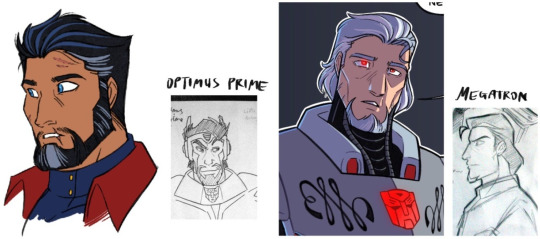


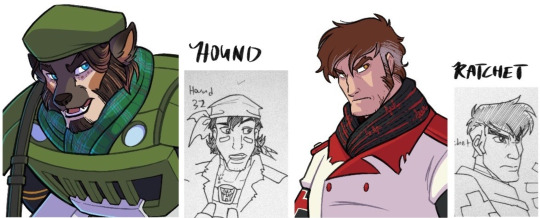
Q) It’s incredible to see your artistic improvement too! Give us a behind-the-scenes look! Show us a secret ;))

Say hello to my workspace! I’ve been working exclusively on the Ipad Pro since late 2016, which is fantastic because I can basically whip up concepts and sketches on the go anywhere. Nowhere is too out of bounds to work on TTB!

Also, do enjoy this sneak peek at true!form Rung, whose synthezoid human body took years to perfect.
Q) YESSSSS alright I must admit this is one of my favorite Rungs, and certainly my fave within TTB. Amazing. Phew, anyway. Where did you draw inspiration from? What canons, what other fiction, what parts of real life?

TTB was initially conceived as a faithful retelling of the IDW 2005 narrative before it was transformed into its own continuity and as such, it borrows heavily from concepts and mirrored plot lines introduced in that run! I chose to have the series inspired off it specifically for the amount of history and worldbuilding it introduced to the franchise.
Anime like Gunslinger Girl and Beastars inspired the depictions of Cold Constructs, especially the more harrowing aspects of their upbringing as government assets instead of children, and Beastmen (Beastformers) in TTB.
I haven’t depicted the world itself in my art all too much, but the architecture from Tiger and Bunny, which has sort of a futuristic Art Deco feel to it, is what you’d usually see in major cities. There is an in-universe reason for that---with a Point Of Divergence set in 1920 followed by 25 years (an entire generation) of progress basically being kicked to the curb due to the Quintesson wars, mankind was basically in a time-locked bubble until the end of the wars, and by then their heroes were 1920s-style rebellion leaders, which lead to 1920s fashion (especially among the Manual Working Class---Megatron, Jazz and Optimus all rock 1920s fashion at some point of their lives) and architecture being celebrated and retained as sort of a reminder of how things were before The Invasion. This anime’s background design is also where I adopted the tiered system TTB’s major metropolises are often built on (with each tier being designated to a different working class) from.
The main artistic style itself is a love letter to 90s cartoons, in particular Gargoyles’ deep and drama-driven character narratives and designs as well as The Centurions’ take on body armor logistics.

I also take inspiration, especially armor-wise, from the characters’ given heritage and background. As an example, Hotrod who is depicted as Irish has the flames on his armor done up with Celtic knots. Welsh aristocrat Mirage’s armor bears olden knight-style filigree and has his Autobot logo designed as a coat of arms. Indonesian Soundwave’s armor and Decepticon logo takes cues from Batik and Wayang Kulit while their mask is based off the Barong.
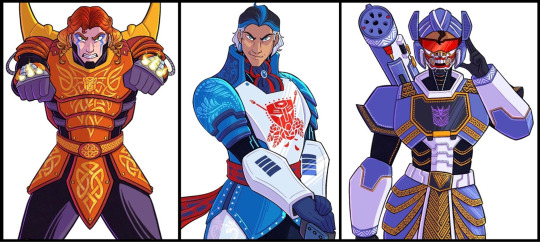
Q) They are absolutely gorgeous! Show off something you're really proud of, a particular favorite part of your cont.
The worldbuilding in general! Most Humanformers I’ve seen tend to treat it like a fun exercise which it is and is definitely valid, but I found myself wanting a full-fledged world to lose myself in and I sought to try and make that world myself by drafting a detailed history and timeline of events which would affect ongoing narratives, having indepth worldbuilding to include almost all societal aspects of the universe and expanding on the concept of Beastmen and Cold Constructs existing in a human setting.
I’m not so secretly proud of the research and diversity included to make the cast look like the multicultural, globally-based team that they were meant to be instead of being locked to a single region! My original draft from 2007 was, to put it simply, quite culturally monolithic and I wanted to improve on that aspect with TTB.
I’m also proud that I’ve kept to it this far! I’m a notoriously flaky person jumping from one idea/fandom to another and to have kept at this continuity for the better part of ten months is honestly a personal feat.
Art-wise, this scene depicting a young Megatron working alongside Terminus and Impactor (cameo by @weapon-up-wallflower‘s OC Missit!) is definitely one of my favorites since it helps build up the world they live in and plays to familial bonds and comfort found in one another despite their less than ideal circumstances.
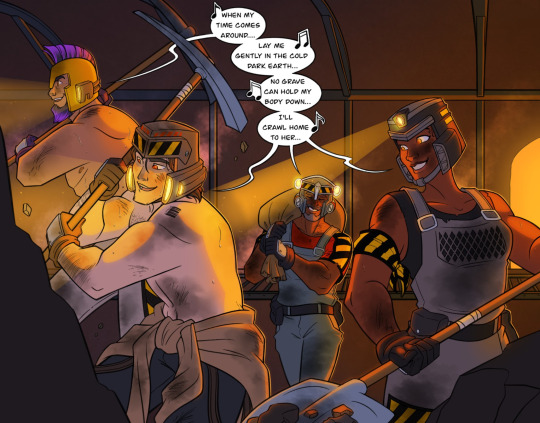
Q) Everything has come together so beautifully, you absolutely should be proud. What other fan canons do you love and why? Would you like to see them interviewed?
I am dying to hear more from @iscaredspider’s Sparkpulse continuity! Her designs are MIND-BLOWINGLY GORGEOUS and I want to hear more about what inspired her to work on it!
Also YOU. Yes YOU BLURRITO. LET ME HEAR MORE ABOUT SNAP.
Q) [wails and squirms away in the mortifying ordeal of being known but in a very flattered way] I WILL SOMEDAY I PROMISE aflghsdjg thank you QwQ
Well that was fantastic, Oni, thank you muchly! A magnificent continuity with so much to look forward to! Coming up next is another personal fave of mine, the first inspiration for SNAP, so stick around...
#long post#gore#ties that bind#spotlight#transformers#HUMANFORMERS#transformers au#tf original continuity#transformers fan continuity#transformers redesign#maccadam#i said id post this on sunday but i realize thats a holiday for lots of folks on this site :/
352 notes
·
View notes
Link
This makes me nervous, but I’m going to post it. I’m going to try my best to achieve my goals. I’ve put in a ton of work already, so I’m looking for additional help.
From the campaign:
My name is Trey Briggs, and I'm a black woman who writes paranormal horror, speculative fiction, and other types of fiction.
You can find my stories at MaybeTrey , Astrid the Devil , and on Instagram , Medium , and Wattpad .
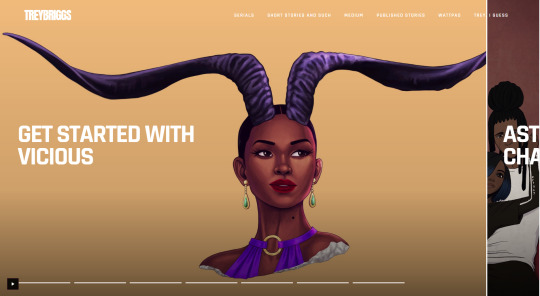
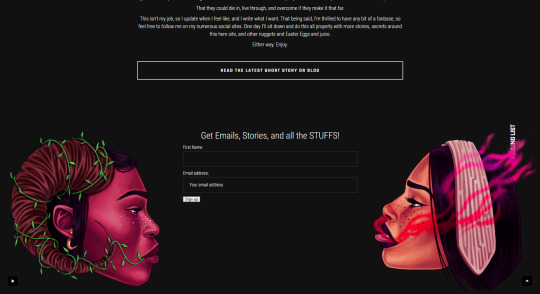
My stories are aimed at black people who want to read dark stories that focus on original black characters that are complex and interesting.
I genuinely believe Black audiences deserve a variety of genres to delve into, and I want to introduce them to paranormal horror, dark romance, and fantasy that they haven't gotten enough of in the past. I also believe that this can be done across multiple mediums, and I spend my money with black creative professionals to make these experiences extend beyond my words.
For the last two years, I've run my stories on sites and Instagram to great reception. I like to craft complex experiences that offer looks at character backgrounds, side and backstories, full websites for each title, and more. I also provide encyclopedias, maps, audio journals, and other ways to get into each world.
During these last few years, I've run into a lot of walls, jumped a lot of hurdles, and tried my best. I've worked with amazing black artists, voice actors, and actresses, musicians, designers, and more. I trust my ability to run a project, especially when it comes to planning and finding talent.
My overall goal is to run a team of black creatives that crafts novels, graphic novels, audio experiences, and animated series for a dedicated audience.
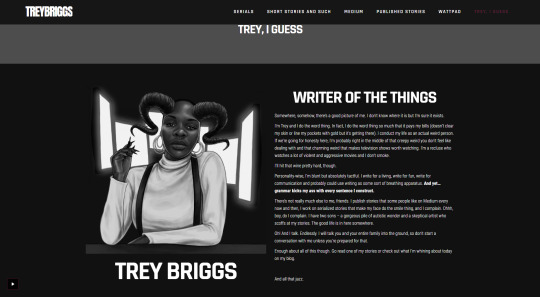
Why I Need Help
Long story short: I have the skill, I have the marketing/website building/business experience, and I have the drive. There's a lot I can do on my own, but there's also a lot that gets left behind because I don't have the money I need to proceed at a steady pace.
I need help with funding so I can focus, hire the right people, and craft these stories the way they deserve to be crafted.
I have thus far spent over $60,000 of my own money on my projects over the past two years - the writing and site-building are easy for me; the rest has to be hired out. I have art, site costs for hosting, domains, templates, specific plugins, and maintenance, audio (and vocal artists to pay), musical, and editing costs.
I'm by no means rich or even particularly financially stable. I have taken on tons of extra clients for my digital marketing business, transcribed hundreds of hours of audio for dirt cheap, and taken out personal loans. I even worked a second full-time job along with my full-time business last year to afford to produce the content I love. It's starting to take a toll on my mental health.
I plan on continuing to fund these projects out of pocket (and finding ways to do so), but having financial help, however big or small, would allow me to move a lot faster and with less stress. It would let me flesh out ideas and concepts that I have had to scrap because I can only physically handle so much extra work.
I run a full-time marketing business from home, homeschool my autistic 10-year-old, and generally have a busy life. Some of the strain is taking a toll on me, and I don't want to give up. Having some financial backing could allow me to drop a client or two after a few months and focus on the work I love to do.
How You Can Help
I mainly need a start—a sort of base.
I want to emphasize that I plan to continue to provide the main bulk of funding for my projects. I know my goals are ambitious, and I know each step will take time and money. I welcome any help to make the process smoother and to get around the initial hurdles. I'd like to have ebooks and novels offered on my site by the end of the year (along with the free serials and stories).
Funding means that I can broaden the projects, include more free aspects to my sites, and secure direct financing through sales of ebooks and audiobooks sooner. It also means that I can offer MORE stories, whether they are online only or fully fleshed out novels and sites.
I am swamped with trying to work enough to cover all my bills and creative projects, so I lose a lot of time I could spend plotting and writing. If I have better funding, I can get my stories out quicker (and with fewer mistakes).
The Initial Stories
Let's talk about my stories! If you're familiar with my work already, you can skip to the next section.
My main story site is Maybe Trey .
Currently, I have two big titles and a bunch of smaller ones that I am seeking help with funding:
Astrid the Devil
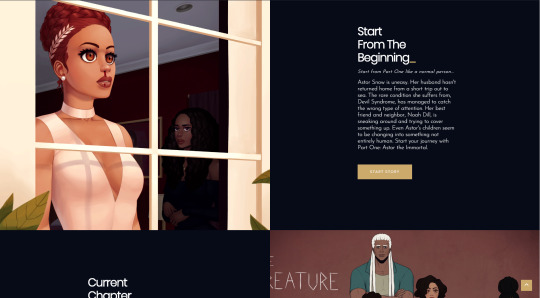
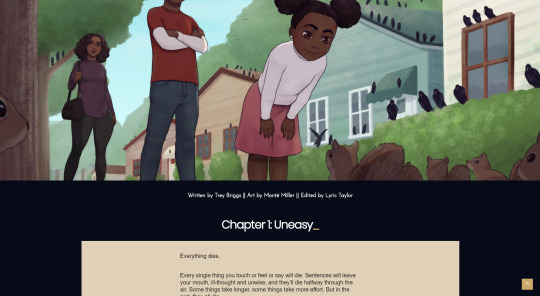
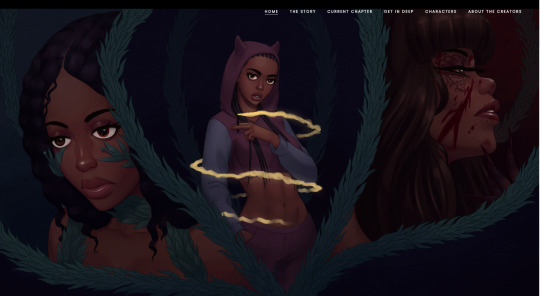

Astrid the Devil is the complicated story of a girl who inherits not only her family's features and DNA, but their fears, struggles, and fights. It's the story of a condition called Devil Syndrome, the women who suffer it, and the monsters that devour them. It's the story of the fight to save the people you love at the expense of innocent lives.
At its core, Astrid the Devil is the story of a woman who inherits the chaos of three generations before her. It's a look at what is truly passed down to our children, and how they're left to fight our battles in the aftermath of our failures. It's the tale of an indescribable monster and the women who struggle to defeat it. It's a journey into how their every decision could save or destroy an entire world.
Astrid the Devil is the story of Astrid Snow, but her story can't be told without the story of the women before her.


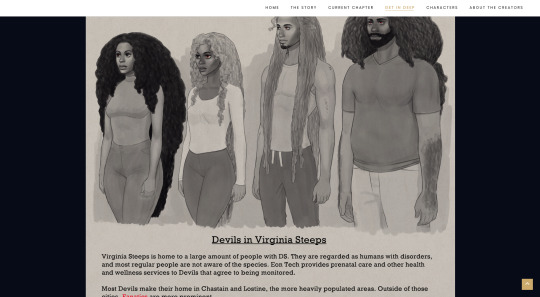
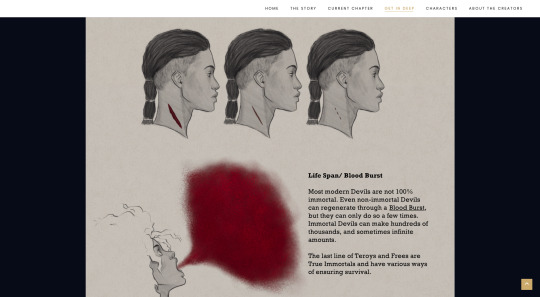
Vicious: On MaybeTrey and The Vicious site (in progress)
Somewhere, a war is brewing. That's the only thing that's for sure to Junnie Gorton, a young horned girl suffering from a debilitating disease called Horn Rot. She typically dealt with her low survival rate and abnormally large horns by escaping the world with her best friend, Lewish. Now she's forced to figure out which side is which, save her entire species, and find out the truth behind the sudden uprising in her home.
Horn Rot, a highly contagious and violent disease spreading through horned people, is causing mass amounts of madness and death. Normal horns grow in ways that will pierce, suffocate, and maim their owners, and the only one who can stop it is Junnie's mother, Lyria. As Lyria falls deeper and deeper into an anti-social revolt, the country reels. While Junnie broods, her entire species must prepare for mass extinction. Her brother plots with a group of people with less than good intentions and Lewish is quieter than usual.
In a civilization brought up on extreme violence and competition, Junnie and Lewish try their best not to get swallowed by their culture, their lives, or their horns.


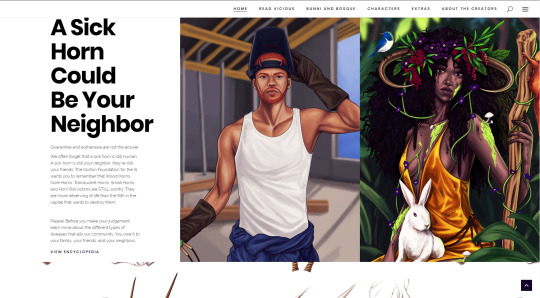
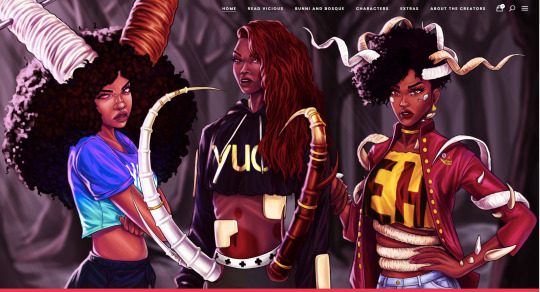
Bunni and Bosque :

Bunni lives. Bosque dies.
We all know how this story starts.
Bunni is obsessed with destruction and death. She comes from the healthiest Horned family in her country. She's from the oldest, purest bloodline in the world. And she's bored with it.
Bunni spends most of her time trying to escape her duties as a pureblood. She wants things dirty, messy, foul, inconsistent. Having parents that are willing to kill to keep their bloodline pure is annoying. Knowing that she'll live a long, full life, produce more perfect children, and die unscathed is agonizing.
Bunni wants something to mourn.
We all know how this story ends.
Bosque is destined to die an agonizing death, alone on his family's land. He's watched everyone he loved and grew up with perish. Sometimes it was because of their disease. Sometimes it was because of the malice and hatred of others.
While he's absolutely withdrawn and satisfied with his life, Bosque has never had a chance to live it. He spends his days basking in the sun, bathing in wood baths, and contemplating the end.
Bosque isn't interested in joining the rest of the world. He'd rather die out, alone, where his family belonged.
Bosque wants to go peacefully.
But neither expected to meet each other one day in a supermarket. Neither expected to fall in love, lust, and every vicious and dirty thing between. Neither expected to be so right for each other, all while being wrong for everyone else.
You know the end of this story. Bunni lives, Bosque dies.
But maybe something will change.
My smaller titles, Bunni and Bosque /Aite and Jude, can be found at Maybe Trey .
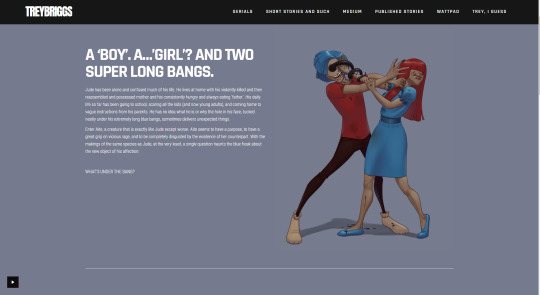
The Business Plan
The initial phase of my business plan is to get the sites populated with ebooks and audiobooks for sale. I also have prints that can be sold. Right now, I am in the audience-building phase while I save up for editing the full novels.
In terms of an actual business with which to publish the stories, I already have a registered publication company in Illinois: Wolfless Studios LLC. I took this step earlier this year with plans to self-publish Astrid and Vicious. So that is paid for and done.
I have also gotten initial editing done on the first six chapters of Astrid, though it will need to be edited from the beginning again once everything is said and done. I've spent over $1000 on that so far, and it would go a lot faster if I didn't need to save up to edit each chapter.
Astrid the Devil is fully plotted, outlined, and only needs the last three chapters. Bunni and Bosque and Vicious are newer, but plotted and already deep into character development (all being shared across social and Wattpad for audience growth). Aite and Jude and other shorts are plotted, and three other unshared stories are plotted and at the editing phase.
Other costs and ways I would use the funding (I would still put in my own money and do as much on my own as possible):
Initial $30K
$6000 - $7000 Line and Copy edits for Astrid (currently at 250000+ words/expecting over 300000 at $0.02 rate)
$6000 - $7000 Line and Copy Edits for Vicious
$3000 - $4000 Line and Copy Edits for Bunni and Bosque
ISBN Purchases (Separate ISBN for each format for each book) - https://www.myidentifiers.com/identify-protect-your-book/barcode
Covers for Astrid/Vicious/B&B Print Versions
Site Hosting Costs and Maintenance for 2 Years
Site completion for all stories
Initial store and app development
40K - Marketing and Graphic Novels
Social, Print, and Web ads
Email Marketing Campaigns
Booths at Decatur Book Festival (depending on COVID)
Social ads and promos
50 to 60 pages
First two chapters offered as free promo with email sign-ups
Audio journals for each character
Situational audio journals
Encyclopedia for Astrid (finishing up)/Vicious
65K - Hires and Next Phases
Ability to hire a Full-Time Editor
Audio Series for each (professionally done)
Vicious Graphic Novel
Additional Title Added
Short animations for both Vicious and Astrid (with plans to fund more with book sales)
Fleshed out Story Sections (Novellas for each character of each series)
Short comic series with Astrid and Vicious side characters
Possible to plan out monthly subscription service with new stories and 'story package' deliveries
75K -
Astrid the Devil Graphic Novel
Vicious Graphic Novel
Astrid the Devil Animated Short
Ability to hire part-time Web Developer
Additional bigger title
Anything Over - I ascend into pure light. And also, I can add titles, cover more mediums, and eventually expand my publishing to other black creatives.
From there, I should be able to handle the funding via sales of books, comics, audio, and more. Again, I will always offer mostly free content across the sites.
I believe in proof of concept, and I have diehard fans on my social platforms. With no outside funding, I've been able to a lot on my own. I'd love to expand my business into one that does the same for other black authors, artists, voice actors, and animators somewhere down the line.
Thank you so much for your consideration. I appreciate all my readers, present and future, and I appreciate any help!
See incentives and more on the actual campaign: https://www.gofundme.com/f/help-trey-publish-black-paranormal-horror-stories
Thank you so much!
#support black authors#writeblr#support black creators#black creators#original characters#original story#donate#buy black#black businesses#my writing#Astrid the Devil#Vicious#Bunni and Bosque#Aite and Jude#Trey Briggs the Writer#paranormal horror#speculative fiction#gofundme
3K notes
·
View notes
Text
On Kong Kenan/Super-Man
It should've been him. He should've been the Superman of 5G/Future State/right now not Jon, and he should be the one getting an HBO Max series not Val. Hell he should be getting a movie!
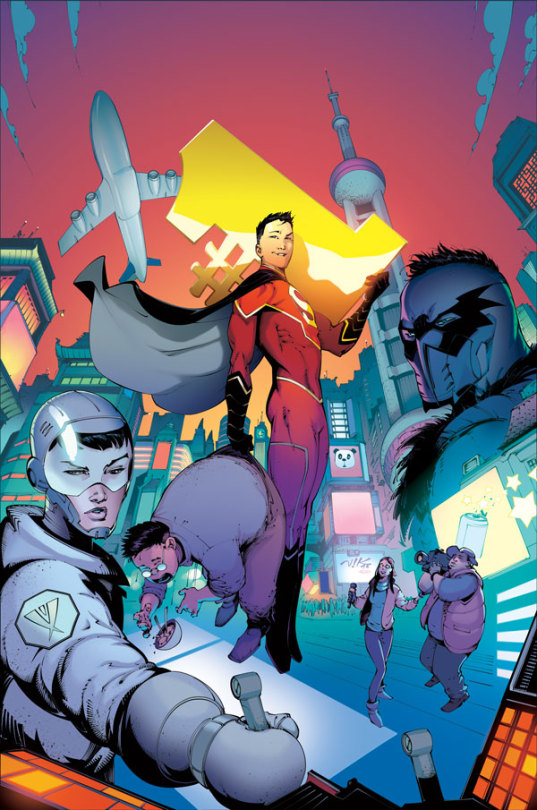
God this dude is literally the best legacy character Superman has ever gotten, wholly his own person with his own lore and status quo while still building on the idea of "Superman". I am so pissed at DC for essentially just dropping him after his ongoing ended, what the hell Lee? You keep trying to make the Wildstorm characters happen, I need you to get my man Yang another Kenan book.
Have to admit I was a bit nervous at first about whether or not Kenan would be a worthwhile character. Yang's New 52 Superman run had been a disappointment to me overall, with only the the arc where Superman has underground wrestling matches against forgotten gods really sticking with me. Now he was introducing a brand new Superman? Didn't feel like he had "earned" that yet. But from the first issue I was hooked on this new character.
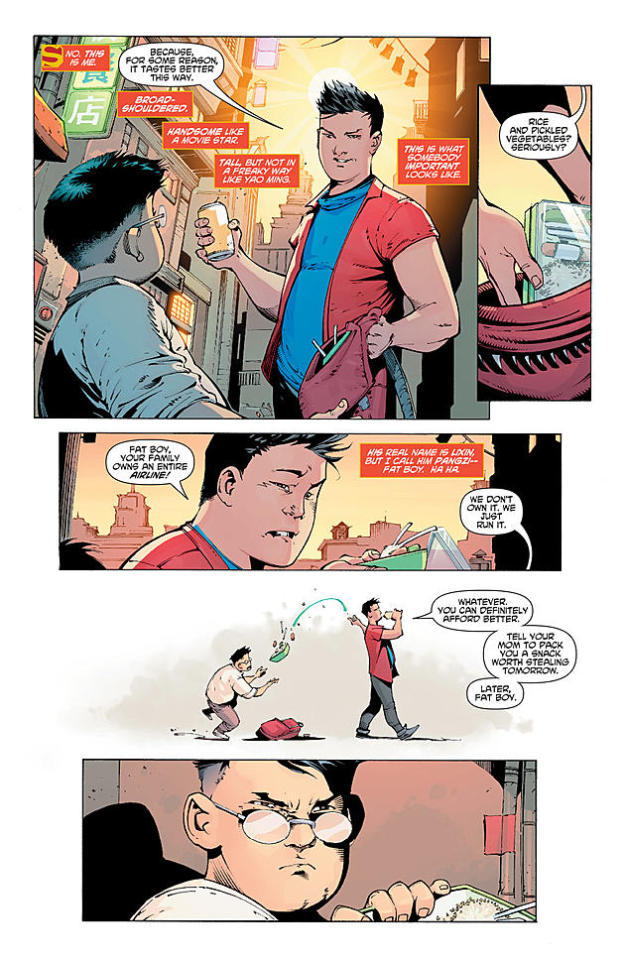
Kenan was unlike any other member of the Superfamily. He wasn't kind or sweet, he was an asshole! He was a bully! He was fantastic! Right from the start Kenan was set up to undergo a very different kind of character journey than the other members of the Superfamily. Empathy, humility, respect for people weaker than himself, these are all traits most heroes wearing the S-shield already posses by the time they first don the crest, but not Kenan.
Like all bullies he was even a bit of a coward himself at first, trying to bail on the experiment meant to give him Superman's powers right as it begins. After "saving" Lixin (the kid he bullies and steals lunch from every day) from Blue Condor he demands all the money Lixin has on him as payment. He's not courageous or selfless either at the start, Kenan is as much of an opposite of Superman as you can get short of being Bizarro. Learning the appeal of these traits formed the basis for his growth over the course of his series.
Seeing Yang bring in a lot of recognizable "Superman" elements in the series, but with a twist, was also great. Kenan is the one who bullies "Luo Lixin" rather than the traditional Clark/Lex friendship of Pre-Crisis and Birthright. Initially Kenan develops a crush on intrepid reporter for Primetime Shanghai, Laney Lan, but she dismisses him as too young and Kenan eventually ends up pursuing Avery Ho (Flash) instead. Baxi the Bat-Man of China has a similar relationship with Kenan as the traditional Superman/Batman in terms of being vitriolic best buds, however Baxi is the one who has the most respect for authority while Kenan is the rebel. Kenan is a part of the "Justice League of China" which does not meet with the approval of the already established Chinese superheroes, the Great Ten. That contrasts nicely with the good relationship the Justice Society and Justice League have, as well as seeing Yang lampshade the "Chinese copy" trope and incorporate that into his storytelling.
One of the funniest differences is how Kenan chooses to immediately reveal his identity as Super-Man to the world by taking off the compliance visor he was forced to wear, contrasting with Clark's choice to hide his identity. He was so eager to impress people that he never gave any thought to the danger he could put himself or his family in by revealing his identity until it was too late, something Clark is well aware of and has taken great pains to keep his identity secret. Was a missed opportunity for DC to have Kenan comment on Clark copying him for once when he outed himself under Bendis.
But one of the most poignant differences between Clark and Kenan is the gulf in separation between their relationship with their parents. Clark has a loving relationship with Ma and Pa Kent, trying to live up to their lessons as best he can. In contrast Kenan's mom was believed to have died in an airplane crash when he was just a child, and he never really knew her. His father was distant from him after that and the two weren't really close despite Kenan's attempts to impress him. So Kenan lacks that strong connection while still clearly loving both of them.
Pa Kent's death is one of the most tragic examples of Clark's love for his parents, and I've always been a fan of takes where Clark promises his father to fight for the powerless on Pa's deathbed. Kenan gets a similar scene at the start of his career, his dad "dies" (after being exposed as Flying General Dragon, a pro-democracy "supervillain" from the Chinese authorities perspective) and wants Kenan to promise he'll fight for Truth, Justice, and Democracy. But because Kenan's dad never really bonded with him, Kenan doesn't know what those mean, and can only promise that he never wants to see people die, something his father takes comfort in at least. In classic comic book fashion it's revealed that Dr. Omen, Kenan's "boss" and the one who gave him his powers, saved Kenan's father, because she is Kenan's mother! Kenan's relationship with his parents forms a lot of the crux of his character arc, and seeing how Yang utilizes the classic Superman concept of family kept the storytelling exciting.
Yang's brilliant exploration of the concept of "Superman" through the prism of Chinese culture was a great way to differentiate Kenan as well.

I absolutely freaking love how he tied to the concept of Qi to the S-shield in particular. Connecting the shape of the shield with the way Kenan has acquired his powers along the path of the Bagua (eight trigrams used in Taoism that represent the fundamental principles of reality), with his octagon S-shield outline representing all eight principles together, was mindblowing! So was the idea of restricting Kenan's access to his powers unless he was actually acting in a Superman manner, that tied his character growth to his power growth in an entertaining manner. There were so many characters and concepts that meshed Chinese and DC lore together, like how Emperor Super-Man was Kenan's "Doomsday", they even recreated that iconic dual kill shot! The Chinese Wonder Woman Peng Deilan, being based on the Chinese Legend of the White Snake! There was even some Korean mythology referenced with the Aqua-Man member of the JLC "Dragonson".
Yang also managed to do a Superman Blue/Superman Red story with Super-Man Yin/Super-Man Yang!
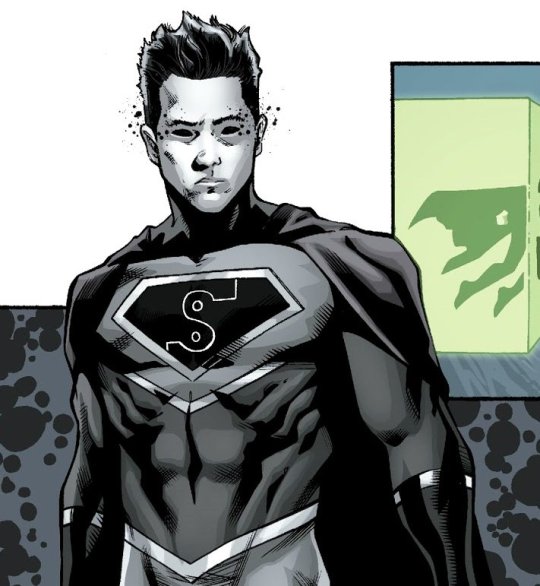
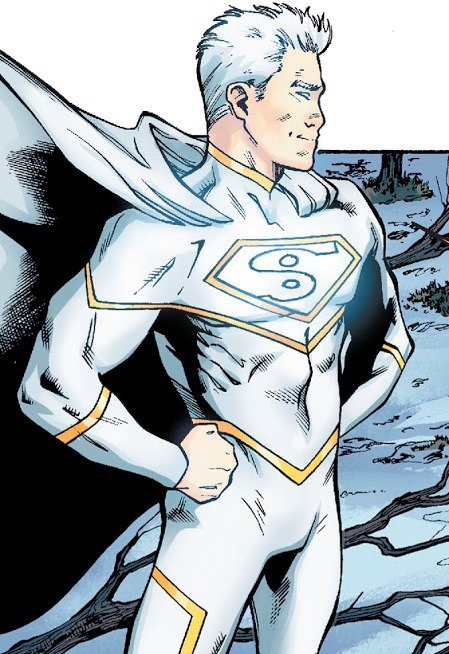
Shameful that it took me a while to realize what Gene Yang was doing but once I caught on I was touched. You can tell how much Yang loved Superman and his mythology, and how he was excited to incorporate as much from Clark as he could, while still using it in a way that was solidly Kenan's. And not just Superman's mythology, but the history and lore of the entire DC Universe. I-Ching got to be brought in, fleshed out, and used as Kenan's mentor! The "Yellow Peril" villain from Detective Comics #1, the comic DC gets its name from was brought in and revamped as I-Ching's twin brother All-Yang! Hats off to Yang for taking a racist caricature and attempting to make him into something more.
This series was a beautiful attempt by Gene Yang to build a space for Asian heroes and villains where they could be more than stereotypes, Kenan himself being a defiant mold-breaker in every regard as the complete opposite of most Asian characters in Western media (a jock, a bully, loves his dad but not on great terms with him, a powerhouse as a hero, etc). So much thought and hard work was poured into this by Yang and his team of artist collaborators.
Especially the costumes, man Kenan had so many great looks. From his starting outfit (which is my favorite Superman variant not worn by Clark himself), to the one with the Yin/Yang shield he acquired later on, to his Super-Man Yin & Super-Man Yang outfits, Kenan looked damn cool. Part of me is bummed they didn't go with the Chinese character shield they toyed around with, but I loved how Yang used the "s-shield" as a plot point, so I'm not too broken up over it.
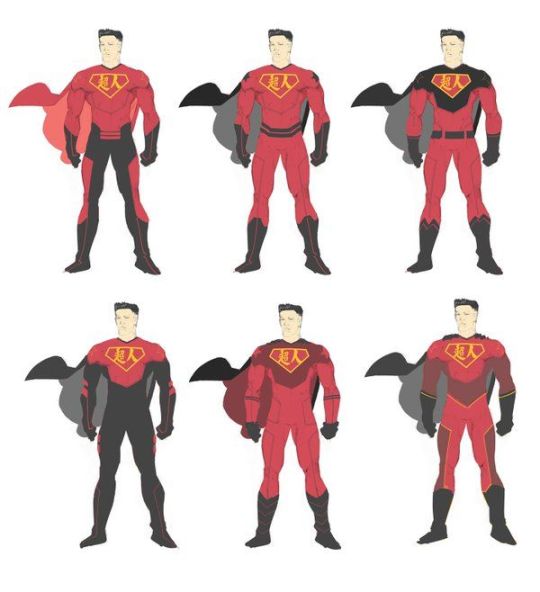
All that great work Yang did to build that space up has been more or less forgotten sadly. It was nice to see Kenan in the DC Asian Month Celebration issue. Avery is going to be in Justice Incarnate at least (unsurprising considering she was created by Williamson). So fucking bummed that Superman Family Adventures cartoon didn't happen, they were going to have Kenan and John Henry Irons in it! Would've been a dream come true for me to see Irons in animation again, and Kenan making the jump to outside media! Maybe that would've encouraged DC to let Yang keep writing New Super-Man, or at least encouraged them to use him elsewhere instead of allowing him fall into Limbo.
Unfortunately I'm not sure what the future holds for Kenan. Jon is being pushed as Clark's replacement in the comics, with DC keeping all the other contenders such as Kon benched. Calvin is leading the Justice Incarnate team likely due to the upcoming Coates reboot that will make Clark black. Val will probably get something once Taylor leaves Jon's book or once they officially announce the HBO Max show is happening. So where does that leave Kenan, my new favorite PoC legacy hero? Currently my only hope is that Yang is working on something for DC involving him. Yang left Batman/Superman, where I was hoping to see a Baxi/Kenan team up, to go work on "exciting other opportunities" per his Twitter. So fingers crossed that there's something in the works for Kenan!
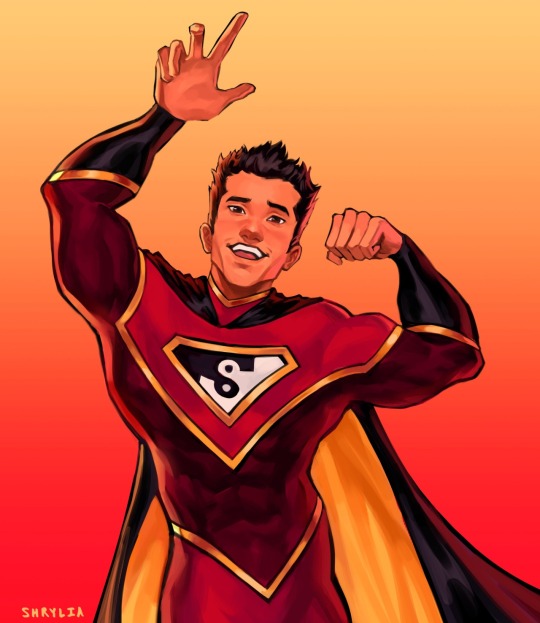
One day I hope he gets his day in the sun again.
143 notes
·
View notes
Text
Fruits Basket Manga Review , ch 109
-The Tragedy of a an episodic format attempting to connect narrative in a series: (Tohru’s Background or Kyo’s Focus?)
One of my issues with se03, ep6 (other than it being 3 chapters combined horribly with new material added for shock value) is that it was weakly undecided who would be the focus? who would the narrative follow?: Is it tohru’s own pov abt herself? is it the gramps giving boring exposition abt tohru over weak still images of flashbacks or is kyo thinking abt tohru’s pain?
The truth is, it was all the above in the manga, but the manga gave each a chapter focus so that the chapter is well-directed with focused narrative. The anime weakly jumbled the 3 chapters together as they always do. You mix chapters & tada~ you got an ep, you only need a broad weak theme that connects the dots! here: it is tohru! & that’s it. As long as the 3 chapters discuss tohru in any form & manner, nothing will seem off if we put them next to each other in a 20 minute ep! right? riiiiiight ????
.. this was never a correct way. Just like a chapter needed a narrative direction, the ep is the same!!
ch 107: The beginning of tohru’s pov on her realization abt loving kyo.
ch108: tohru’s full pov of shock upon reaching the conclusion that she loves him & the beginning of her mom’s issues & abandonment.
ch109: Kyo’s pov abt tohru’s pain & his involvement, guil & the sheet hug.
ch110: (completely cut from the anime!!!!!!!!!!!!!) Kyoru’s part: the aftermath of kyo & tohru crossing the line of being in the most vulnerable & intimate, building towards a more crushing impact of the climax. The stronger & more painful their love is, the more it will hurt. Also a yuchi buildup?!!!!
-so, you see each chapter has a direction i& a narrative it follows independently that is weaved together to make a connected tissue of the overall plot. The anime puts the 3 chapters next to each other & we are lost on who to follow? kyo or tohru or the gramps. That’s why it feels tohru is weak & her two chapters worth of pov is stolen from her cuz it cut or shortened to include the grandpa, kyo, isuzu, shigure & let’s not forget (kazuma, yuki & haru) at the beginning, the dramatic shock value addition & OP & ED. All these take valuable screen time. The ep shocks us by moving from tohru to kyo. One minute she’s crying with him on the streets, next he’s at the grave & she’s visiting isuzu.
Kyo said he isn't going to the grave in the ep, upon seeing him actually going, I just assumed he wanted to avoid, hana, cuz I’m so invested in his story that I remember sth happened in se1, ep 14.. ages ago, The anime didn’t even allow kyo to inner talk abt avoiding hana... In their weird mind, kyo only inner talks in dramatic situations..See the difference!

Not only the writer (a) reminds us why kyo avoided the grave visit, she also (b) seized the opportunity to shine lifht onto an issue that will be the center of kyo’s struggles: Running away!
The anime introduce this in kyo’s pov only when kyo confronts tohru. Only when it was needed & couldnt be avoided. This is sth that will be the core of all the climax & the aftermath as well! Kyo running away.. How bad are you if you avoid inserting one line only that can be said in few seconds & establish great deal & foreshadow plenty!!!!!!!!!! I can’t for the life of my understand why short lines are cut from kyo when in the anime they have him be standing silent in the graveyard. Like slap the line above the silent scene!!!!! But doing so means the anime team understands tohru & kyo’s issues. They don’t. Not the slightest.
-Ep 6 signals the beginning of the anime moving from episodic format of se1, 2 & 5 eps of se3 & entering a connect plot. The anime doesn’t know how to do that & screwed tohru in the process. The protagonist’s main issues are one ep worth only. The antagonist main issues are one ep only (ep7). Ep 6, was treated as a stand alone ep (minus the inserted shock scene to create a lingering issue that needs a following ep to explain. TOLD YOU they don’t know how to make a series!). Thus the following ep 7 is akito’s focus. Everything that was established in ep 6 was pit on hold until akito reaches the craziest mindset for the climax. See why ep 6 was so bad? it is Should NOT be a stand alone ep.
-The plot connects kyoru emotional & physically: (Kyo’s chapter with a tohru’s focus:
Unlike the anime, the chapter knows what it’s presenting 7 where it’s going. Kyo’s issues. This ch focuses on him uncovering parts of his past as it connects with tohru’s. Unlike the anime, we know why kyo's connection to kyoko’s past. The anime is hiding this for the climax, no problem, it can still work both ways. However, hiding kyoko /kyo connection doesn't necessarily mean hiding kyoko/tohru connection. But the anime is cutting this to milk it in an ova or series next year~ no problem, it can still work if you handle this ep’s flashback better. for all the artistic creativity they inserted in the added scene, they failed miserably in tohru’s flashback portion. how?
By choosing a frontal pov shot in tohru’s grandpa flashback as if the audience are the ones who abandoned tohru or opening the door to find her alone. it does NOT work at all. why? the audience are encouraged to be like tohru since ep 1 as tohru is the mother, angel, fixer & endearing hopeful girl. The audience will NEVER abandon tohru, that’s why tohru’s story felt disconnected & weak in the anime. Not knowing what kyoko did, who would abandon such child?! differently not us. so why use the frontal pov shot? -_-’
-tohru confesses her pain to kyo without being ushered by isuzu, without any outside factor. She simply visited the grave & came home. hiding her pain. once again. like she always do. One question by kyo, prompts her to “ complain a little” call back to se1, ep5 as he advised. we see tohru get out of her shell little by little. NOT SCREAM OR SLAP. She opened up. why? cuz the story is abt “ opening the lid” not abt “ snatching the lid”. No need for shocks. Yuki opened his lide slowly, tohru even slower, kyo is resisting opening his altho it is cracking in this chapter. When your story focuses on character buildup it pays!
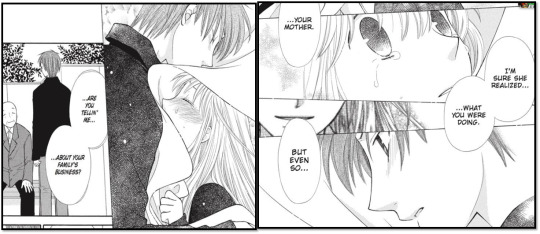
-I’ll give the anime credit when it due. The hug scene is so good both in manga & anime. but so awesome in animation, colors, music & voice acting. It’s breathtaking & painful. The most beautiful kyoru scene in the whole anime.
-It represents their mutual vulnerability, understanding, pain & determination to love the other but not also let go. kyo has made his mind to be locked in order not to hurt tohru & tohru has made her mind that she can’t let go of her mom.
You see, the scene’s meaning hits different between manga & anime; In the anime: tohru has already challenged the sohmas & screamed to be with kyo, while kyo is still decided to leave her. In the manga: they’re both at the same spot (undecided). I like both interpretations but I’ll choose the manga’s version. Simply cuz it means tohru is still uncovering her issues which means more focus on her, & more explanation of why cant tohru love her mom & kyo at the same time.
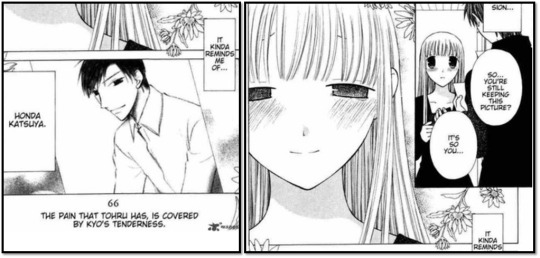
-This expression on tohru’s face is a the complete opposite of the shock value expression in ep 6! T_T. I do’nt even hate the shocked scene addition itself that much, I just think (a) this is NOT its time! Tohru deserved better spotlight! (b) kyo didn’t friggen forget! ah! THIS I HATE! (c) the whole shocked scene was so wasted in ep 7. tohru return to her stupid dumb lalala~ land, cooking & forgetting kyo. what growth? what determination & screams to isuzu? what enduring kagura’s slaps? nope! just happy & cooking, lalala~ no one was freaking over her mom’s picture~ lalala~ & kyo just slept it over~ shhhh... its okay. he’ll forget again... see? totally wasted!
The anime knows nothing abt connected narrative! augh!
Side Notes:
We see kyo asking the gramps why he’s offering him info abt tohru which is so logical! XD. I love it.
I’ve read ch 110 & wanted to insert the kyoru scene in ch 110 here, & put yuchi alone in a different post, then I realized I’ll need to talk abt it again once I analyze yuki’s own expressions! XD. so, I’ll put all ch 110 together in one post. It kinda half written by now, so I’ll publish it very soon in two days time. I didn’t read ch 111 yet tho.
I hope ch 110 is the last I feel this much disappointments in furuba’s anime & by ch 11, it hopefully be be minor changes altho I doubt that cuz the manga needed to dwell into tohru’s mindset & the anime kinda stopped after ep 6. so, yup! more big changes coming!
The sheet hug is so brilliant in theory & application! so romantic & so endearing! love it so much! The anime did it so well, too!
I love kyo’s narration & pov cuz it’s so refreshing change from the anime where he rarely does!
I really wish they kept the kyoko abandoning tohru part in the anime... sigh~ it has nothing much to affect her story with katsuya. so it won’t ruin the spin off/ ova or whatever it’s called.
I love the light focus on tohru in this chapter & how organic & natural it is opposed to how forced the plot seems in the anime....
45 notes
·
View notes
Text
Art Deco and TAZ Graduation

- Episode 30 "Take your Firbolg to Work Day
I know Travis probably made his choice to have the H.O.G. headquarters be designed with Art Deco for aesthetic purposes and didn't think of its function to the world of Nua BUT his choice is a really great accidental component that adds onto the world building in Nua and to one of the core problems that Graduation addresses involving the systemic nature of Nua. In this essay, I-
(And then I proceed to actually write the essay hidden below. FAIR WARNING: This is extremely long. If you want to learn about Modern Art History and how it ties into Graduation, this is your lucky day.)
This analysis/essay is going to be meta in terms of using evidence from real world events but it is needed to explain the history behind Art Deco and help us relate to the themes of Graduation. I think it’s clear to see how the systems and people in power in Graduation are influenced from the way our governments are now so I don’t think these connections are distant, rather closer together than we think.
Also, before we continue, I want to direct you to this lovely post made by a dear user and friend, Michelle/ fitzroythecreator, LINK HERE
She explains what she believes to be a core theme of graduation that I agree with and have integrated into this essay. Check it out <3
Before I can explain how Art Deco is tied into Graduation's core theme, I need to lay out definitions and context to art movements in the early 20th century. Along the way, I will make connections to the world of Nua and how real-life events in the early 20th century actually can relate to Graduation and its worldbuilding.
Let’s address what is Art Deco. Art Deco started as an art and architecture movement during the early 20th century (1900s). Most people are familiar with its aesthetics of geometric designs and influence of industrialization because of the roaring 20s era and many media influenced by it. Do you wonder why it was popularized in the US? It’s because during the great depression in the US, public buildings, more importantly federal government buildings, were commissioned to have this aesthetic thus it would have more publicity and access to the public. The H.O.G. headquarters could easily be compared to this event because it shares similar attributes of being a public government building.
With this information, it would be really interesting to imagine the timing of Graduation being set around the early 20th century. Art Deco gives us a time period to compare what kind of social events Nua could have faced similar to the real world. The modern period of the 1850s-1950s was a time when people were disinterested and scared of the changes that industrialism made in their daily lives. People were frustrated with the changes made in their lives and sought out ways to cope with the changes through escapism. In Graduation, I would argue that we see this skepticism and wariness in the characters about the changes Nua’s Socioeconomic systems made in their lives and society in general. A good example would be the student NPCs and their insistence that their hero and villain titles are just labels since they have been stripped from their original meanings. They still somewhat criticize the structure while upholding it. As the campaign progresses, we meet various characters who are very critical to Nua’s current orderly system such as Order and Gordie. In fact, despite their roles in society being vastly different, they both share the same opinions that the system is unjust as it hurts people thus there needs to be a push for change. I am not trying to label the time of Graduation to be around the 1900s, rather whatever year Graduation happens is in parallel to the events of the 1900s.
When I first heard Travis say, Art Deco, I was interested but disappointed it wasn’t Art Nouveau. My original thinking was because of Art Nouveau’s elitism of making the architecture more artistic and complex that only educated rich people can understand and less functional for the average citizen. A lot of the art displays during the art movement were held in house museums that were limited to rich eyes. I thought this reasoning made sense in terms of the H.O.G. headquarters being this elite building common people can’t comprehend. However, with continuous thought, it clicked. Art Deco fits so well.
Art Deco was meant to be a direct response to Art Nouveau and the Arts and Crafts movement. (And many more but for the sake of simplicity, sticking to these two major ones) Both movements share similarities of the desire to make total works of art.
____________________________________________________________________________________________________________________
For art Nouveau in architecture, that is more on its aesthetics of stylized curving forms, thus it creates uniqueness with the architecture. For the Arts and Crafts movement in Europe, they focused on the importance of the craftsmanship and quality. The thing about the movement is that it’s heavily influenced by socialist values and the distaste for industrialism. Both art movements were diverse in style and locations globally. Because both took place internationally, there was no determined manifesto or structures for artists to adhere to. Another thing is both movements had lots of ornamentation which takes great skill and time to put into the works. By doing this, it would make the works more unique aspects to its character, however more time consuming and difficult to replicate.
Art Deco takes response to this because critics felt like these movements were outdated for the growing industrialism happening during the early 20th century. Art Deco focuses on sleek geometric design meant to be reproduced easily thanks to industries and have more emphasis on its function rather than aesthetics. It’s meant to be functional to accommodate for the new technologies of the 20th century.
So, let’s recap, in the late 19th century, two movements, focused on the style which had no concrete structures to adhere to and had the goal to make total works of art that is reliant on itself, are then replaced by Art Deco, a movement focused on its aesthetic to be mass produced easily and have a stronger focus on the form of the architecture to serve its functions. Does Art Deco sound similar to a number of Socioeconomic systems placed in Nua?
One of the key ideals of Art Deco is Functionalism. Art Deco is one of the many architectural movements in the early 20th century that decided to focus on function rather than aesthetics. What is functionalism? It is the idea that everything works as an integrated whole and that all the different components of a larger system are designed to work together. It is orderly. Architecture in the early 20th century was designed to suit the needs of the space. For example, each element of an office buildings would be designed and organized to suit that place. This ideal is more emphasized after the Great Depression in America where architects shifted their focus on the Streamline Moderne, where they aimed to make structures practical to the demands of real life and remove the emotional aspects of expressionist art.
Travis’s little choice to pick Art Deco is tied to a core theme of Graduation of dismantling the standards and structures set in Nua. It’s so brilliant yet unintentional. I know Travis hasn’t read up on modern art history. I hope by reading through, you can spot Art Deco’s need for creating limitation to focus on the functions and how it benefits the whole system. It doesn’t allow for the emotional aspects that Art Nouveau and the Art and Crafts movements held. Nua’s system follow the same thing. Everyone has a function in the socioeconomic system that has limitations meant to exploit the work labor and functions of the individual. The system leaves no room for indivduals to have growth to create real change. That’s not a flaw of the system. The system is literally designed to be that way with its many rules and standards. It's impossible to break away from it without being punished by the system itself. You need to function within its rules and have practical skills to contribute to the system. Your independent nature is stripped away. By having Art Deco be a core aesthetic design for the H.O.G. Headquarters, Art Deco ITSELF is just another element in the architecture meant to serve its function of upholding the ideology of order that H.O.G. and the world of Nua has. This orderly system has replaced the wild world that Higglemas in episode 12 remembers.
“I remember... the world when it was wild. Not sophisticated and ordered and... bureaucratic, like it is now.”
#taz graduation#taz grad#taz analysis#taz meta#vanitewrites#this is the art major part of me screaming out#modern art history is so interesting and fits so well into the history of Nua#Travis is not smart enough to think this deep for the aesthetics of the hog building#BIG THANKS TO MICHELLE#i still think about that post you made on the self reliance theme
82 notes
·
View notes
Note
hello! i have to ask: what do you think about supernatural au's where monsters don't exist/monster hunting is not a thing? do you think the characters could even exist out of that realm? i honestly have conflicting views on this because on one hand i do enjoy the character dynamics but i also feel it would be wrong to just take away something that is fundamental to this show, idk though
i LOVE this question. thank you. im going to write a very long post now
obviously there are infinite ways to interpret a story, right? but sam and dean (and castiel too of course) as characters are completely inextricable from their backstories, and their backstories are inextricable from themes of transience, poverty, loneliness, violence, familial duty, masculinity, otherness, american protestantism, horror, humanity, and monstrosity. i dont think that it’s Wrong to take away the monster hunting as an element in the story, but i DO think it would be bad storytelling to do so bc the fact is that these characters w these personalities wouldnt EXIST without a few VERY crucial plot points/themes. and thats a GOOD thing!! say what u will abt the writers (and i do. i do) but the early seasons do an EXCELLENT job of building characters who are inseparable from their stories, characters whose every action is reflective of the Story itself in a bigger sense, characters who are interesting because of the way that they’re used to tell that bigger Story. there’s a sense of cohesiveness between character and theme and narrative, and removing one of these aspects would lessen the other two. that is the mark of good storytelling (that, in my opinion, distinguishes seasons 1 and MAYBE 2 from all the rest; although funnily enough i think castiel’s arc in s4 is the best example of what im talking about outside of s1-2. but anyways).
without these crucial themes and narratives, who ARE sam and dean? why do they even matter? what’s the value of them as characters? aus that strip away all those VERY important themes and plot points strip away the actual artistic value of the characters, and reduces them to objects of the audience’s emotional whims. the only reason u have any affection for these characters in aus is because you know and understand the source material, and you remember why those characters STARTED to matter to u in the first place. this is something that happens in a lot of fanfiction i think: the most essential themes of the original work are ignored for the sake of emotionally expedient scenarios where both writer and reader can clock out of having to do a bigger analysis of the story and just focus on, for example, a certain ship getting together and/or having sex, or a certain character getting a happy ending. and like i wont deny that theyre fun to read! they are essentially transplanting already-developed characters from their already-developed stories into a new fun scenario without the themes and narratives that actually made the characters compelling. and sure, sometimes a truly good author offers us a compelling new set of themes and narratives, ones that are interesting and make us think, but i’d argue that the characters in those rare good fics are 1. not...really the same characters from the show, since the story they’re in has been so completely transformed 2. basically shortcuts for the author to cut their teeth on writing original fiction. in any case, a vast majority of fics that remove the themes and narratives of the original story DONT offer a truly satisfying replacement, so the point is almost moot.
my answer, in short, is that aus without monster hunting destroy the character-theme-narrative cohesion that all good stories require, and by extension doesn’t require either author or reader to think critically about the story as a whole. you know that joke that goes around about supernatural just being a crate full of toys that we’re all sitting around and playing barbie dolls with? that is what the fics ur talking about basically are. it isn’t seriously engaging with a story as a piece of art, it’s grabbing a few barbies from a box and putting them in different clothes. and i think the fact that supernatural does fall apart both thematically and narratively so early in its incredibly long runtime is what allows people to treat it as a box of dolls, because most of the time it seems like the writers themselves treat the show as a box of dolls instead of a story that deserves respect and care and thought. so i actually do understand the urge to play with the barbies, so to speak, and to a certain extent i dont even think it’s a bad thing. but i DO think that sometimes, especially online, ESPECIALLY with a show like this where the lines between genuine engagement with the text and playing barbie dolls gets so blurred, people actually start to lose track of which is which, and THATS what irritates me. people start to view the ENTIRE STORY as just a way to see their personal favorite character do what they want that character to do. the character (and their emotional attachment to said character) becomes the whole reason for the story, instead of the story being the reason for the characters. playing barbie dolls is fine! but it DOES need to be balanced out with actual engagement, with literary analysis, with criticism if the story needs it (and my GOD does supernatural need criticism!), and there needs to be an understanding of the difference between genuine analysis and personal loyalty to a character.
like, not to be a snob or anything, but it is important to engage truthfully and fairly with a text. things arent good just because you want them to be good, and stories can only offer you genuine satisfaction and critical/artistic growth if you truly engage with them. engaging with supernatural means thinking/writing about monsters and the Other, and to remove monstrosity as a theme and narrative hollows out the story completely.
#writing this post was the most fun ive had all day thank u SO much for sending it#sorry i love literary analysis!! as if its my fault!!!!!#asks#crit#i guess?? i dont have much of a tag for analysis that ISNT criticism LMFALSDJFKL
31 notes
·
View notes
Text
Hazbin Hotel and Compulsive Representation
(aka my accumulated experience writing and researching about Hazbin Hotel characters as a fan and critic)
Date: September 17, 2020
This is going to be my last article for Hazbin Hotel for now. After that, I’m taking a long break from HH.
I Can’t Ignore My Own Research
I like Hazbin Hotel. But when people have criticism for it, I listen and try to understand why they have concerns about the cartoon that I like.
Mindful Consumption of Hazbin Hotel’s vodoo Content
When someone has concerns about Alastor being an example of Hollywood voodoo, I listened and did the work since I didn’t know what Hollywood voodoo was.
What I found out after writing the article? Alastor’s use of sacred symbols and inspiration of those symbols of an exclusive religion gave me the impression that Vp didn’t do her research beyond aesthetic.
Exploring Angel Dust’s Gay and Sex Worker Stereotypes
When someone said Angel Dust has a lot of stereotypes, I listened and did the work in order to understand where they are coming from.
What I found out after writing the article? The roots of Angel Dust’s stereotypes made me wonder if Vp really delved into what he will represent in media.
3 Examples of Racial Bias in Animation Storytelling
When someone didn’t like how Vaggie was treated in the pilot, I watched the episode again if what they are saying is true... and you know what? Vaggie deserved better.
(I’m also happy to announce that Medium has made this a Recommended article to their readers.)
What I found out after writing the article? The more prone-to-violence dark-skinned girl (Vaggie) to the light-skinned ingenue (Charlie) gave me an impression that Vp isn’t aware of the plight of dark-skinned women who aren’t allowed to be vulnerable and delicate as their white counterparts.
If a character is going to represent women of color, shouldn’t she have done research on their experiences? Or interview them?
How did it all come to this?
That’s when I realized Vp’s compulsive character building from Zoophobia may have seeped through into Hazbin Hotel.
Vp and her Artistic Compulsiveness
I have first read about Vp’s artistic compulsiveness from @zpredraws.
Their blog gives fair feedback and critique of Vp’s art works including Zoophobia and Hazbin Hotel.
Here is what they said about her artistic compulsiveness:
“Viv tends to exaggerate way too much in her designs that it causes a lot of anatomy problems, coupled with her habit of not reviewing her sketches, and sketching impulsively.”
This compulsiveness goes beyond sketching from what I have noticed in my research and writing:
Her habit of thinking character traits from the top of her head makes her dependent on stereotypes, tropes and her other preconceived biases with no to little effort of developing them.
Coupled with her habit of not reviewing sketches is parallel to her not reviewing the writing of her own characters.
Compulsive Representation
@zpredraws mentioned about her character representation in Zoophobia (paraphrased):
She wants a diverse representation of minor groups them adds them compulsively in the story. But because not much thought was given to them, there is not much passion felt for them either.
The characters then end up as token characters with no direction for their stories. Thus, nullifying the point of representing them.
@zpredraws also commented on her compulsive adding of characters (paraphrased):
She has a habit of compulsively adding a character because she liked an aspect of it from an animated film without developing it much.
This is a common mistake of young artists who haven’t matured enough into making a good story. But Vp has graduated years ago and still has this habit.
It’s okay to be inspired but they need to be developed enough to be unique.
With her habit on grabbing only the aesthetics but none of the histories beneath them (which I have observed in my research), the misrepresentation through characters in media continue:
Alastor being similar to Dr. Facilier whose personality traits are misconceptions on Vodou such as cannibalism.
Nifty being similar to the cute genki girl with the yellow-skinned othering of anti-East Asian propaganda and Asian house-keeper stereotype while being fluent in Japanese.
Mimzy having anti-Semite features and being money-greedy -a common antisemitic stereotype.
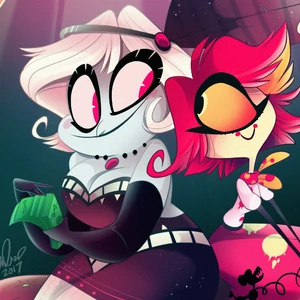
Vaggie’s valid anger being played as comedy as the aggressive angry Latina (which is a negative stereotype of dark-skinned women of color).
Angel Dust as a gay sex worker represented as a horny sex worker stereotype in and out of his profession.
However, Vp did say she developed Angel Dust the most, but for @zpredraws , she’s overdeveloping him.

“If Viv wants Angel to be a drag-queen, a gay pornstar, a mobster, a stripper, Angel will conform to that personality. Viv is focusing and developing Angel so much that she is actually over-developing him. Other characters are being under-developed, while Angel is getting more and more traits stacked onto him that nobody really knows what or who he is anymore..
Lastly, Angel Dust is here not so much for being the worst design in how aesthetically nice he looks, but it’s more of “What exactly is he anymore?” Angel doesn’t have a consistent design anymore, he can be whatever Viv wants him to be. Looking at the above, few people on first impression would know that is the same character. I just don’t know what Angel is anymore, and I think many fans have that same thought too.”
@zpredraws further advised:
Vibrant colors and drawing on impulse can only carry your art that far, and won’t be able to hide mistakes for long.
And I think it’s carrying over to the writing of her characters.
I understand that the pilot took three years to make and that a lot of work was done in it. But in that span, I have concluded in my research that most of the characters’ pre-story personality was compulsively done and not developed further beyond their stereotypes. More effort was put in their design.
As Youtube Staxlotl had noted, the art of Hazbin Hotel pilot took over its writing:
“I do hope if VivziePop decides to continue with the series, that she looks into putting a bit more effort into the writing and dialogue to make the plot more engaging, the characters and jokes more entertaining to watch. Because honestly, if you strip these characters of their amazing voice actors and replace them with mediocre ones, the show would be much, much more boring.”
Hope for Improvement
I hope Vp would hire the people her characters are supposed to represent (queer sex worker, dark-skinned Latina, etc.) as givers of feedback or at least put them in high positions in the creation of the episodes of HH. That is, if she truly wanted an adult comedy without sacrificing a thoughtful story on redemption and tangible character growth that speaks truly of the represented people’s experiences.
Not just make it up as they go along then pat themselves on the back when they get progressive points.
Because for now, the characters with their stereotypes are just continuing the misconceptions of the minorities that they’re supposed to represent. This can negatively affect real-life minorities on how other people perceive them.
I have read that Vp has driven away artists who wants to help her with her Zoophobia. I wished she wouldn’t drive away people who have valid criticisms whose intentions are to help improve the show.
Other Short Works:
The Intention vs Outcome of “Shipping ANYTHING You Want!”
How to avoid cultural appropriation and ableism in making Alastor content.
Angel Dust: Rooting for a Character Who Doesn’t Want to Grow… Yet
126 notes
·
View notes
Text
Dragon Quest III: The Seeds of Salvation review
The original Dragon Quest was an extremely important and influential game that built the foundations to the Japanese role playing game genre, but was an extremely basic game that would end up outclassed by nearly any other RPG on the NES released afterwards that wasn’t completely incompetent, and while Dragon Quest II improved upon the foundation of the original, namely in terms of party progression, it was also a rushed, unbalanced, overly difficult and overall tedious experience. Despite its importance, Dragon Quest’s third installment would have to be a significant step up, and as luck would have it, it was, becoming another of the most legendary and important RPGs ever made, and firmly cementing Dragon Quest as a series that would stay around even to the present day, and how exactly this came to be is what we’ll be looking at today. The version I played was the SNES remake with a fan made English patch, so many of the names in the screenshots won’t match up with official translations. Other options are the Game Boy Color version, which was officially released in English, and even has a bit more exclusive content, namely a very time consuming sidequest and a bonus dungeon related to it, the Ice Cave, and much more recently, the mobile/Switch version, which is also available in English, and is based on the SNES version, minus some of its exclusive content. Be warned, there will be spoilers.

Story:
In an unnamed land, geographically similar to the real world, the archfiend Baramos has appeared and unleashed monsters to plague the land, with its people’s woes ranging from groups of bandits robbing kings and kidnapping citizens, to monsters impersonating rulers, to entire towns being wiped out by the forces of Baramos, who ultimately plots to destroy the entire world. A hero from Aliahan, Ortega, once set out on a journey to slay the archfiend, only to fall in combat with a dragon over a volcano. The child of Ortega is thus given the task of slaying Baramos themselves on their 16th birthday, with the help of a group of adventurers recruited from Aliahan’s tavern.
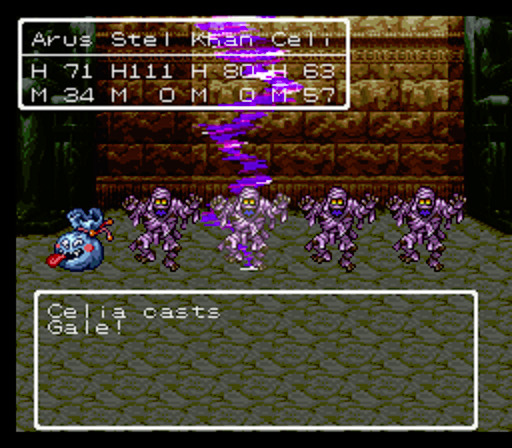
On the surface, it’s still not much more of a plot than the first two games, and for the most part, that is true, but it’s still much more interesting simply because there’s much more going on. Many of the towns you visit are facing some sort of crisis, or have some sort of interesting circumstances around them, such as the immigrant town that slowly changes and expands as the game goes on, making them a lot more fun to discover and explore compared to the towns of the first two games. Additionally, there’s the famous and influential late game twist that strikes after defeating Baramos, namely the reveal of Zoma, Baramos’ superior, and the second world map of Alefgard, the setting of the first Dragon Quest. These two twists are a large part of what made Dragon Quest III so impactful when it came out in 1988, and considering the game presents itself as unrelated to the previous games, and that by the time you defeat Baramos, you’ll have explored the entire world, barring two small locations at most, they hold up fairly well even today. There’s not much more for me to add besides this, however, so it’s time to hop straight to the gameplay.
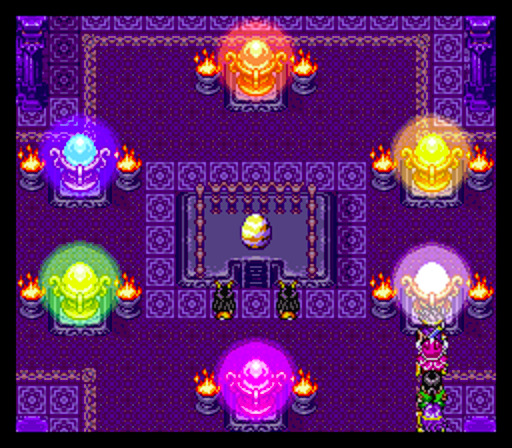
Gameplay:
Dragon Quest III uses the same turn based battle system as the first two games, and besides things like new types of spells and weapons, not too much is changed with the combat itself. The biggest change DQ3 provides is to the party progression system. Instead of the Hero being completely alone like the first game, or gaining two fixed party members in the second, DQ3 allows you to build a party from the ground up, besides the Hero, who’s always required to be in the party, and has the exclusive Hero class, with well balanced stats and unique and useful spells. The party size has been increased to four at a time, and party members can be created and exchanged in Aliahan, with a total of 8 different classes they can be: warriors, slow, yet well equipped physical fighters that act has tanks and heavy hitters, priests, who specialize in healing and support spells and, contrary to most healers in RPGs, actually have decent equipment and offensive options, mages, typical magic attackers with great offensive spells, yet bad physical stats, martial artists, physical attackers with great agility who forgo most equipment and have a higher chance of landing critical hits, merchants, average at best fighters who have supporting abilities like being able to earn extra gold after battle, gadabouts, odd and clownish characters with bad stats besides luck, and a fixed chance to simply goof off and take random actions instead of doing as commanded, thieves, a class exclusive to the remakes, with great agility and several abilities that mainly help with exploration, and sages, who learn nearly every spell in the game, and have a wide selection of equipment options, yet cannot be put in the party to start.

Compared to Final Fantasy I, which had a similar class based party system, and came out only a few months before DQ3, this system actually has quite a few advancements. Most importantly, you’re never simply stuck with the party you start with. As long as you can make it to Aliahan, you can simply make new characters and swap out whoever you’re currently using. Obviously, doing this too much isn’t very practical, considering new members will be behind on EXP, but not being able to permanently lock yourself into an awful party combination is a big improvement alone. Party members who have reached level 20 can also change classes at Alltrades Abbey, resetting their level to 1, and cutting their stats in half, but keeping any learned abilities, meaning, if you were so inclined, you could make a mage with the physical stats of a warrior, a warrior with the speed of a thief, and so forth. Changing classes like this is also the only way to get sages into the party, and even then, only with the use of a Words of Wisdom book, of which only two exist in the game. This lends itself to a lot of creativity, and while I personally didn’t use this mechanic much, only turning my priest into a sage, it’s still an impressive level of complexity for a game this old.

The class balance is also fairly interesting, as beyond the upsides and downsides already listed, classes also level at different rates. Warriors are expensive to equip and very slow, but level the fastest out of the main offensive classes. Martial artists are, by contrast, very cheap, but have the third slowest leveling rate in the game, and the little equipment they do have is usually pretty difficult to get, especially their weapons. Merchants are guaranteed to eventually fall behind if you try to use them, but actually have quite a bit of exclusive, and good, equipment early on, and level the fastest out of everyone. Gadabouts are liabilities, but level second fastest, and can become sages for free once they reach level 20, making them an investment class. Despite how several classes are very obviously inferior in the long run, you actually can get away with some pretty unorthodox party combinations, at least earlier on. Take my party of hero, warrior, martial artist, and priest: very strong physically, but expensive to upkeep, despite the martial artist somewhat balancing it out, and lacking in offensive magic. While switching the priest to sage later on mostly fixed the latter issue, I was still left wishing I had taken a mage with me from the start several times, and yet I was still more than capable of finishing the game. While the difficulty has definitely been lowered compared to the first two games, that’s still a sign of ultimately successful balancing.

For some more combat related changes and improvements, some stats have been added or changed since the first two games. Resilience now determines how many hit points a character can gain when leveling up along with being added to physical defense as before, Wisdom determines a character’s potential magic points, as well as how soon they learn spells, with spells being delayed or expedited by up to three levels, and Luck determines how well a character can avoid debuffs and status ailments inflicted by monsters. Related to these stats, exclusive to the remakes is the personality system, which affects the stat growth of each character, with each party member gaining a personality during character creation or, in the case of the Hero, through a personality quiz given at the start of the game. While this generally doesn’t matter too much for casual play, assuming you aren’t unlucky enough to get the worst personalities on all your party members, it still adds an even greater deal of complexity, either allowing you to try to compensate for a character’s weaknesses, or add to their strengths. You could, for example, give a female warrior the Amazon personality, raising their strength growth, but lowering their agility, wisdom, and luck growth, stats they don’t care about much anyway. You can also change personalities during the course of the game, either temporarily by equipping certain accessories, or permanently by reading certain books scattered throughout the game, which further adds to the depth. It’s a bit overwhelming, but still pretty interesting to see.

Beyond the combat and classes, there’s still a lot of nice things to see. The bag from DQ6, which can hold an unlimited amount of items which can be taken out at any time, has been added, allowing easy inventory management on the spot. The Zoom spell now lets you return to towns of your choice, rather than the last place you saved your game, and while not every town can be warped to, it’s still a massive time saver. There’s a day night cycle, which gradually changes when traversing the world map and affects the state of the towns, and while it isn’t super prominent, there are a few towns pretty heavily affected by it, and you actually get a few ways to manipulate it later on. There’s also a few minigames added, once again exclusive to the remakes, those being the monster arena, where you can bet on computer controlled monster fights for the chance of winning money, and Treasures n' Trapdoors, which is basically a giant board game one of your party members can traverse, with several very valuable prizes available, both from winning and from landing on certain spots on the boards. Despite being very luck based, it’s creative and rewarding enough that the boards are actually a lot of fun to play, and the Switch version lacking this minigame entirely is a big shame. The remakes also added the Cloudsgate Citadel, a bonus dungeon accessible after defeating the final boss, with a superboss, Xenlon, waiting at the end. Defeating Xenlon within a certain number of turns allows you one wish, such as opening up a new Treasures n’ Trapdoors track, or resurrecting a certain character, and thankfully, you don’t actually need to traverse the entire dungeon again to refight Xenlon for more wishes, as a Zoom location is added only a few rooms away.

The biggest improvement DQ3 makes, however, is just how well the game flows. There’s still grinding to be found, yes, but generally, the game goes by much faster. Characters move quickly, the difficulty, as mentioned before, is much lowered, so you don’t need to grind 5 levels just to walk a bit north, and there’s just a lot of variety that keeps the game fresh all the way through, instead of becoming monotonous like DQ2. The dungeons are also much more reasonably designed compared to the giant, nightmarish mazes of DQ2, and while you do get a ship like in DQ2, it comes quite a bit later, keeping the amount of areas now available to explore from being as overwhelming. The obligatory key item fetch quest, this time collecting the six orbs to hatch the phoenix Ramia, is also much more reasonable to complete, with the orbs either being in locations that NPCs directly talk about, or being acquired by fighting bosses. Speaking of which, there’s also many more bosses than in previous games, and while they’re not as frequent as in most RPGs, they still add a nice bit of variety, along with actually being pretty challenging, in a good way. Overall, Dragon Quest III’s gameplay actually holds up very well, and just makes it a lot of fun to play. Even considering this is a remake with a lot of quality of life improvements, I was amazed that this was originally an NES game.
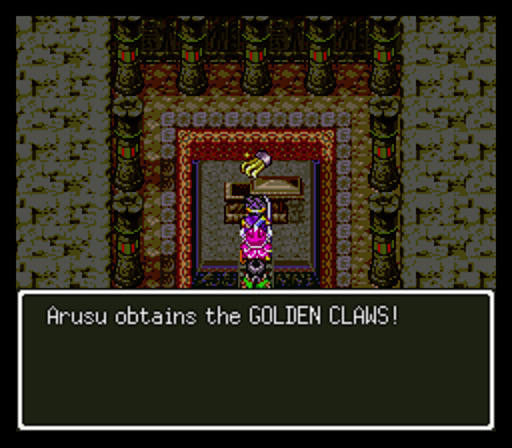
Graphics:
DQ3′s visuals are quite nice, as the SNES version was made with DQ6′s engine. To give a comparison, whereas the games using DQ5′s engine were about comparable to the visuals of Final Fantasy IV and V, the visuals here are comparable to Final Fantasy VI, and considering that’s one of the best looking SNES games out there, that’s a pretty big leap. The character designs come out quite well, and many locations have unique looks to them, both towns and dungeons, with the Pyramid and Baramos’ ghastly castle sticking out the most to me. The enemy battle sprites are still great, and are actually animated whenever they attack, adding a lot of life to them.
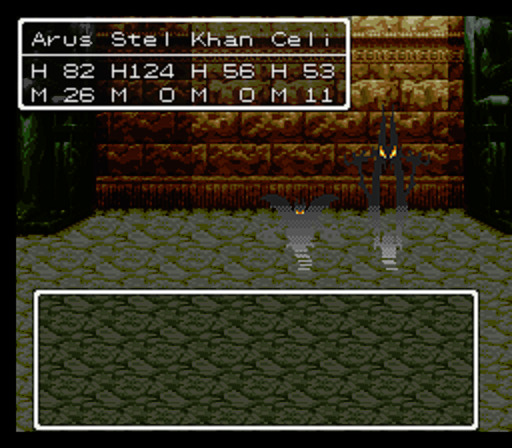
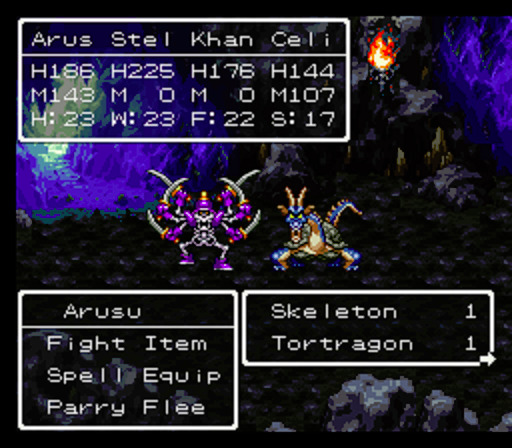
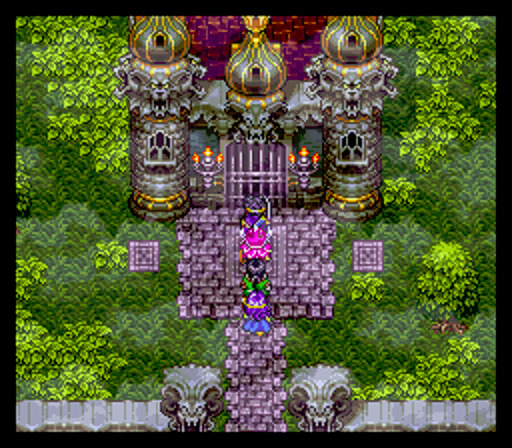
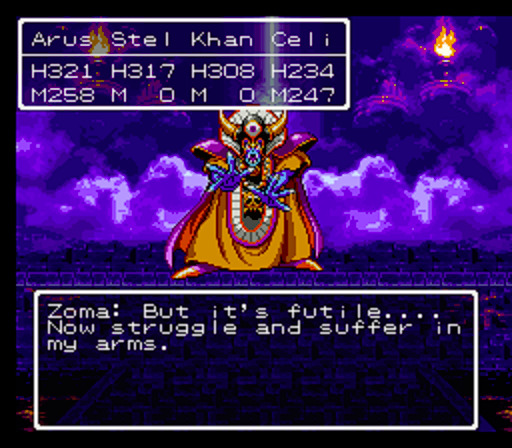
Sound:
As with the rest of the series, DQ3′s soundtrack was done by Koichi Sugiyama, and it’s once again a great soundtrack, even better than the soundtracks of the previous games. From the peaceful Small Shrine, to the iconic Overture, to the peaceful Heavenly Flight, to the world map theme Adventure, to the great final boss theme, Hero’s Challenge, it’s a soundtrack that’s a joy to listen to. It also gives towns different themes for both day and night, which is one of my favorite things to see in games.
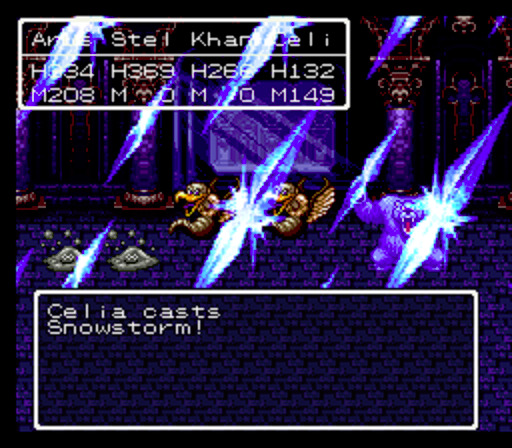
Conclusion:
Overall, I would give Dragon Quest III a recommended. It’s aged very, very well, and genuinely feels like it could have been on the SNES to start. Between the much deeper, yet ultimately accessible mechanics that give quite a bit of replay value, to much better overall design gameplay, graphical, and sound design, it makes a fantastic entry point for the series, if you have a liking for classic RPGs. Till next time.
-Scout
5 notes
·
View notes
Text
The sector of animation has changed throughout the last five years
If you are an artist and wish to see your work on a big screen, Visual Effects aka VFX courses in Pune is a good career option for you. You can work on high-stake projects, associate with the topmost studios and climb up the corporate ladder to lead teams of talented VFX Artists.
The most well-known and widespread use of animation techniques has been in the entertainment industry.
It was once remarked by Albert Einstein that imagination is more significant than knowledge. Because knowledge is constrained, imagination encompasses the entire world, promoting advancement and giving rise to evolution. The art of animation involves giving inanimate objects life in order to tell a tale, convey a message, and leave a lasting impression. The possibilities in this field are limitless and they have their origins in 5200-year-old representations. The changes in this profession over time have fascinated, entertained, and left people wanting more.
The development of this industry has been disruptive, starting with the use of Theater Optique and Cel Animation and ending with the revolutionary development of the computer. Traditionally, animation was only employed to produce cartoon-style content for children. However, its use has grown significantly in recent years, and it is now evident, among other things, in the fields of medical, brand communication, and architecture. A breakthrough has been seen in the use of animation for various production goals, particularly in the last five years.
The heyday of CGI supplanted the stop-motion technology, which was primarily employed to produce 2D motion films on computer systems. This technology allows for the creation of both 2D and 3D graphics, which are then animated using either the frame-by-frame method or rigging. Using these methods for content development allows animators to offer more quickly generated films. Additionally, it made it possible for them to use animation for cross-disciplinary tasks like web series or storytelling.
Entertainment
This industry has used animation techniques the most frequently and in the most well-known ways. The entertainment industry has witnessed astounding technological advancement and genre diversity, ranging from sketch-based animation in vintage Disney films from the 1960s like Bambi and Snow White to the computer-generated marvel of the Kung Fu Pandas of the 21st century. Recently, animation has experienced a comeback in a variety of formats, including contemporary clay-based stop-motion movies like Kubo and the Two Strings and Isle of Dogs, as well as genre diversification to accommodate shifting audience preferences across the age spectrum.
Character design is done on a computer screen, employing geometric shapes in a 3D coordinate system to build a virtual skeleton, even in live-action movies. The character will become believable, alluring, and distinctive when the details are added after the outline has been created using a variety of other methods. For instance, James Cameron's Avatar, a masterwork made with cutting-edge CGI and motion capture methods, is a prime example. 2000 HP servers, 35,000 processor cores, and 104 terabytes of RAM were used in the procedure to produce the result.
In addition to the typical film industry, the gaming industry has also experienced rapid growth. In terms of global sales collections, games like Grand Theft Auto 5 have competed head-to-head with the highest-grossing films of all time and set unheard-of standards for animated multiplayer and story-based games. With movies being developed based on these games and vice versa, there is an expanding opportunity for organic growth in the animation industry.
communicating a brand
Animation is now used more and more to develop video content for many brands, rather than just for movies or cartoons. With the use of contemporary internet technologies, businesses are employing animation to produce commercials with strong visuals or characters that speak for their goods and services. Additionally, following the viral outbreak and people's tendency to socially isolate themselves, businesses found it challenging to cast performers in commercials. To their relief, animation allowed them to easily explain their story utilising original characters and voiceovers that were supported by motion graphic animation methods.
Due to the low production costs and logistical benefits of animation, brands began to consider it as a viable option to live-action ad filming during the 2020 pandemic. Animation experts also easily made the switch to working from home. This has made it possible for the sector to advance even after the pandemic is over and things return to normal in the industrial and economic spheres by 2021.
Medicine
Although the idea of animation in the medical industry may seem strange, the ordinary patient nowadays desires higher-quality medical supplies and services. They want to know what is going on within their bodies, how the medical intervention is planned to go, and what the effects of the treatment will be. As a result, experts use animated videos to inform patients about the conditions they are dealing with. Additionally, pharmaceutical firms use it to raise awareness of a variety of infections, diseases, and safety precautions.
0 notes